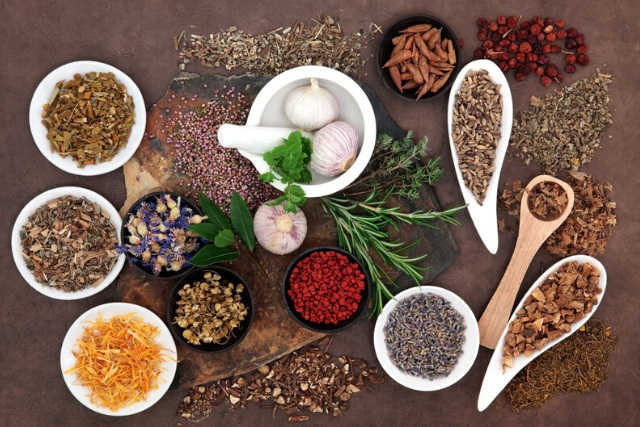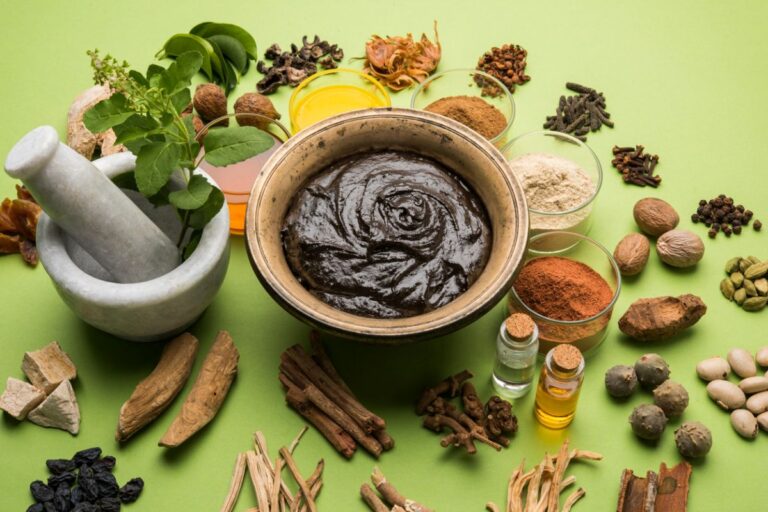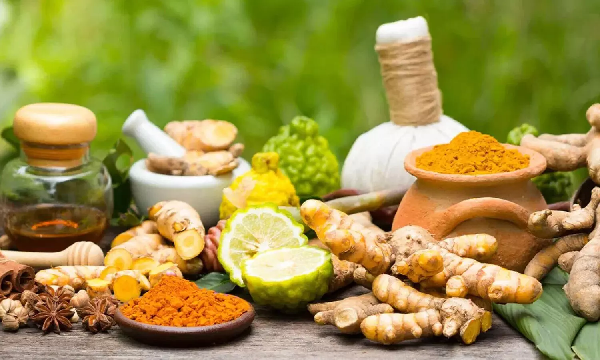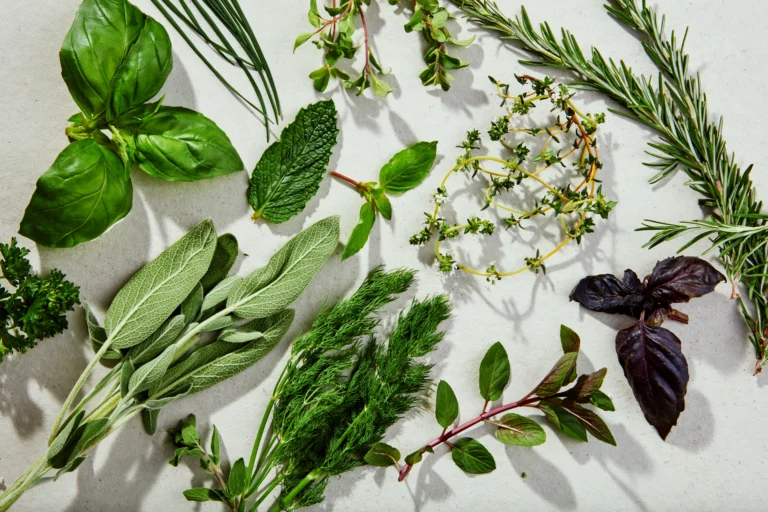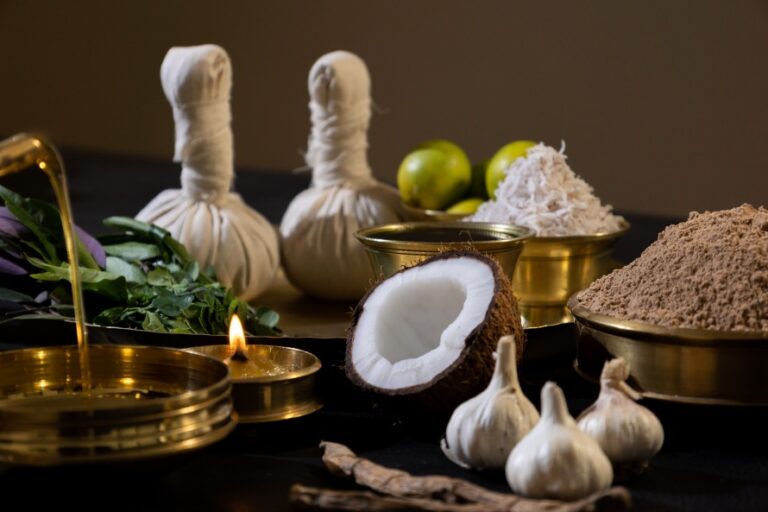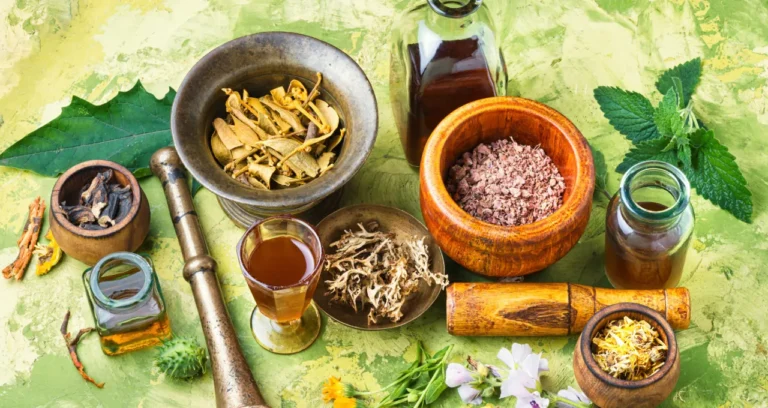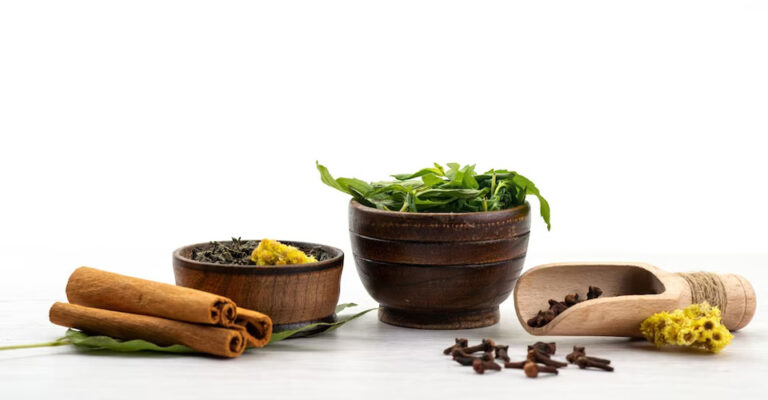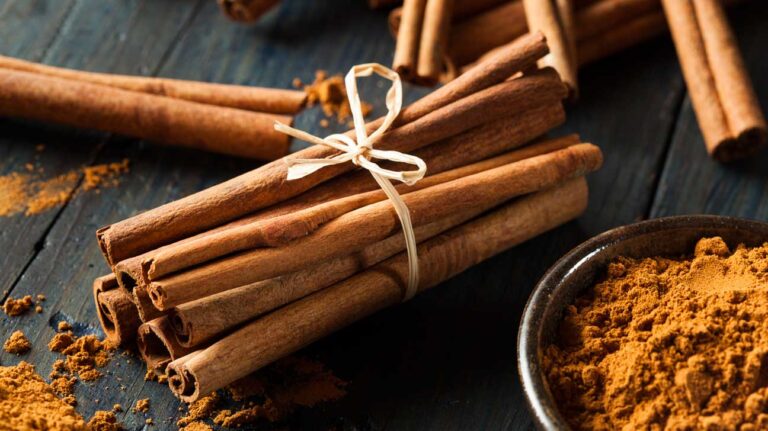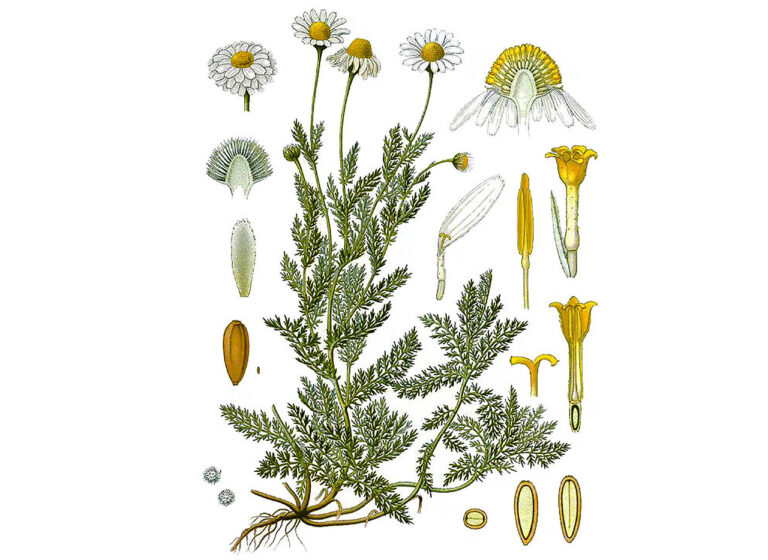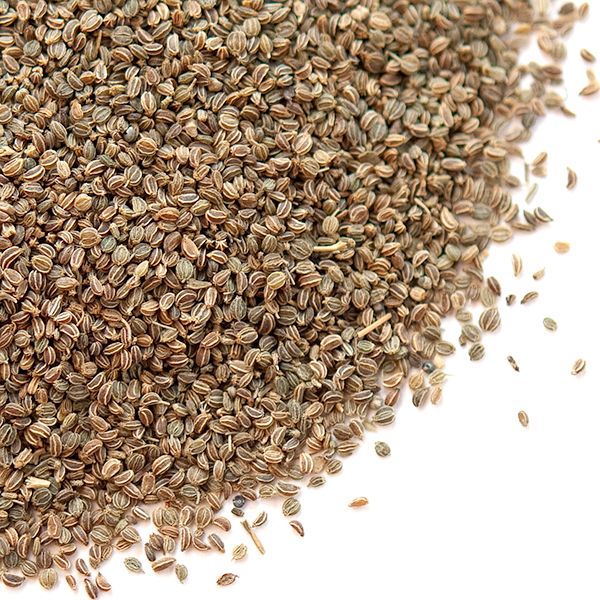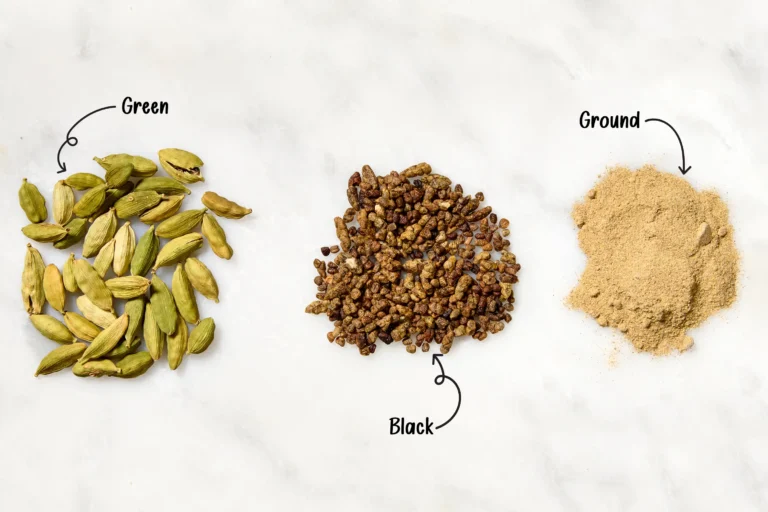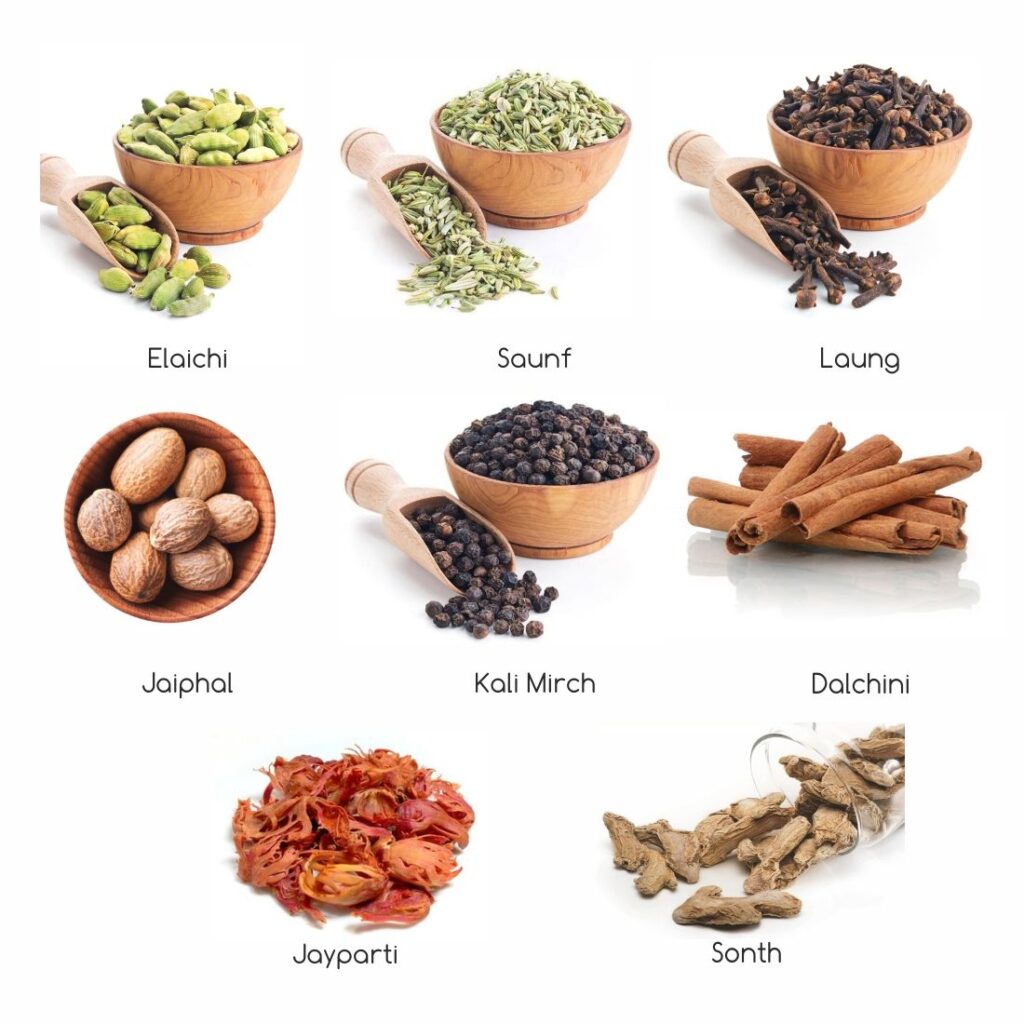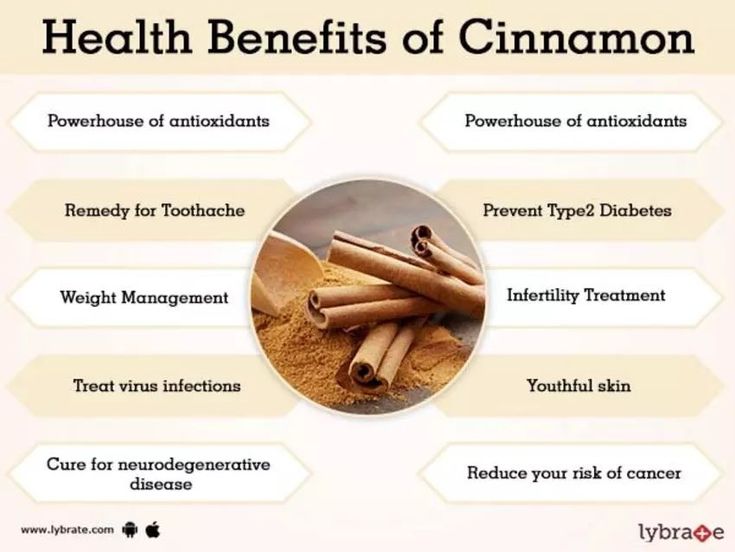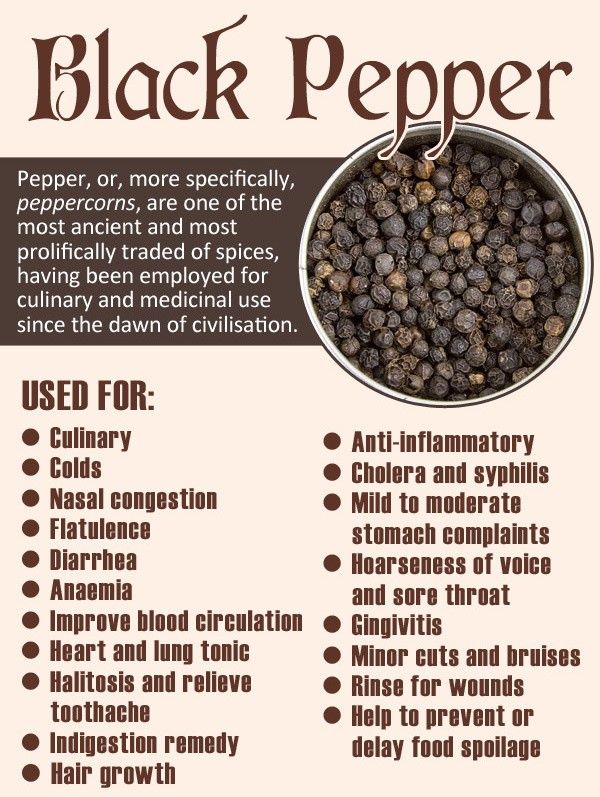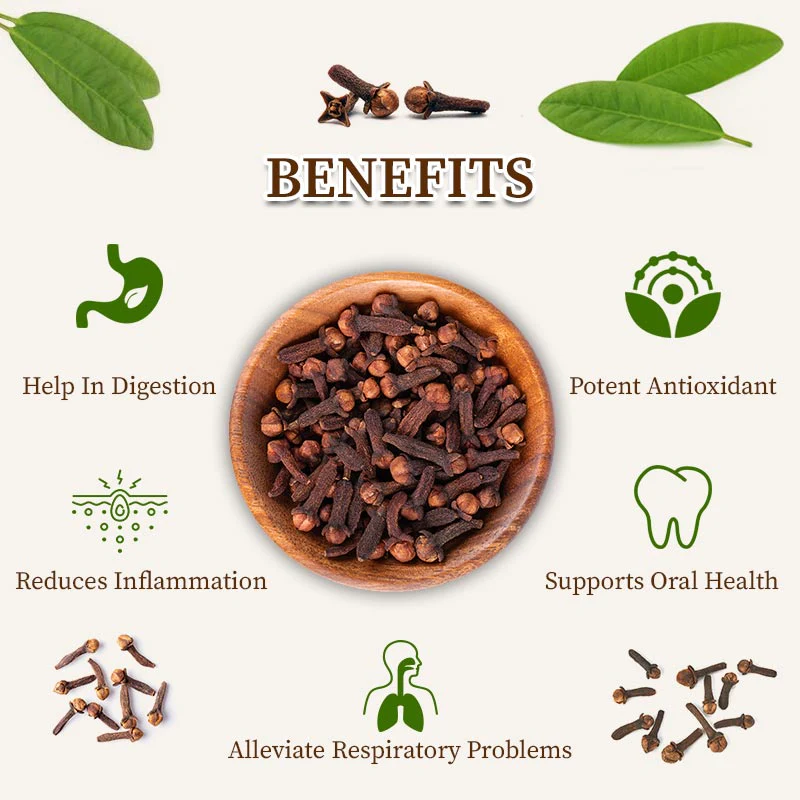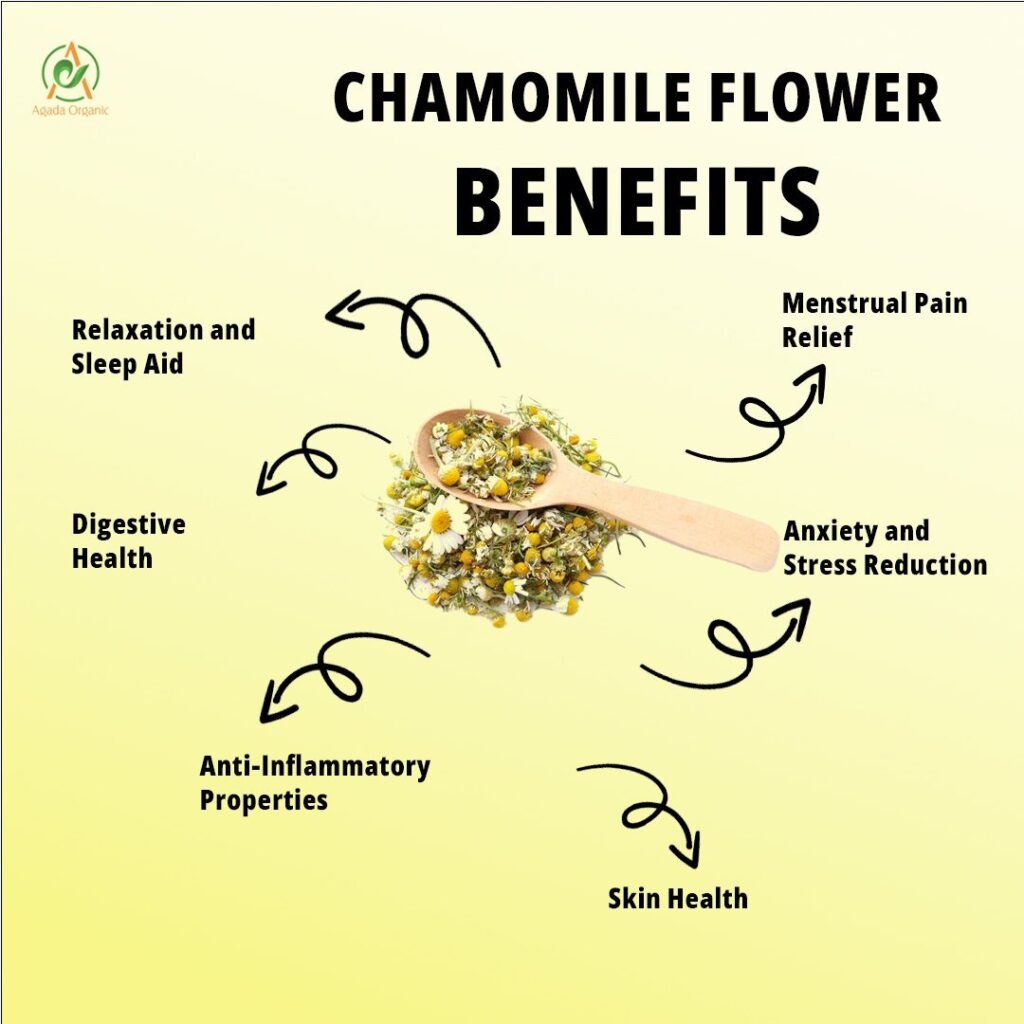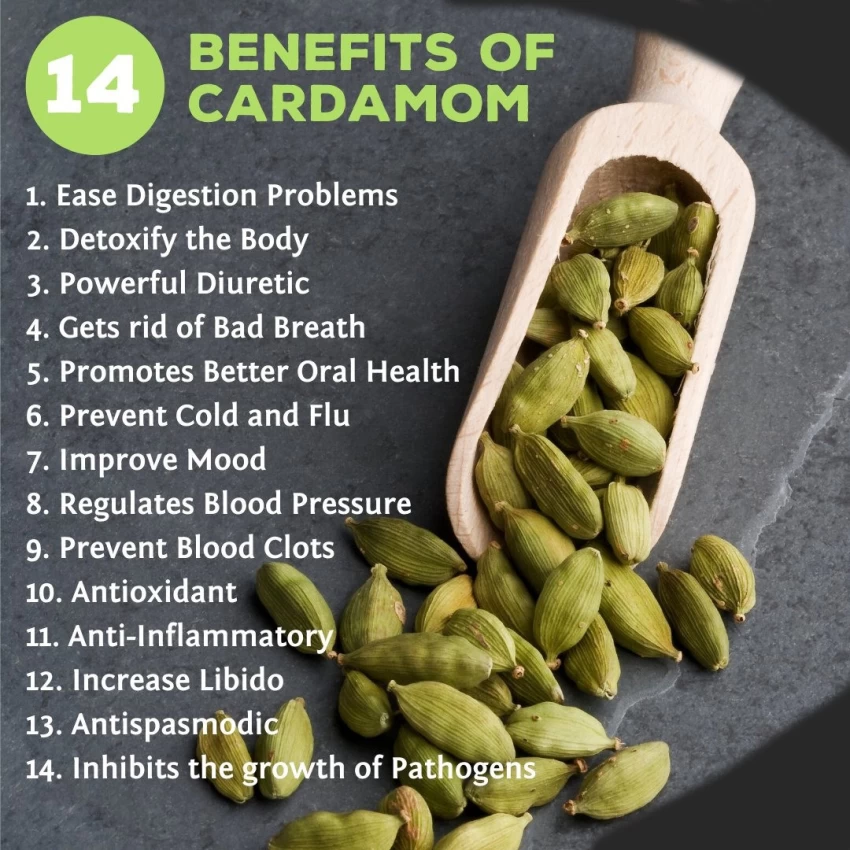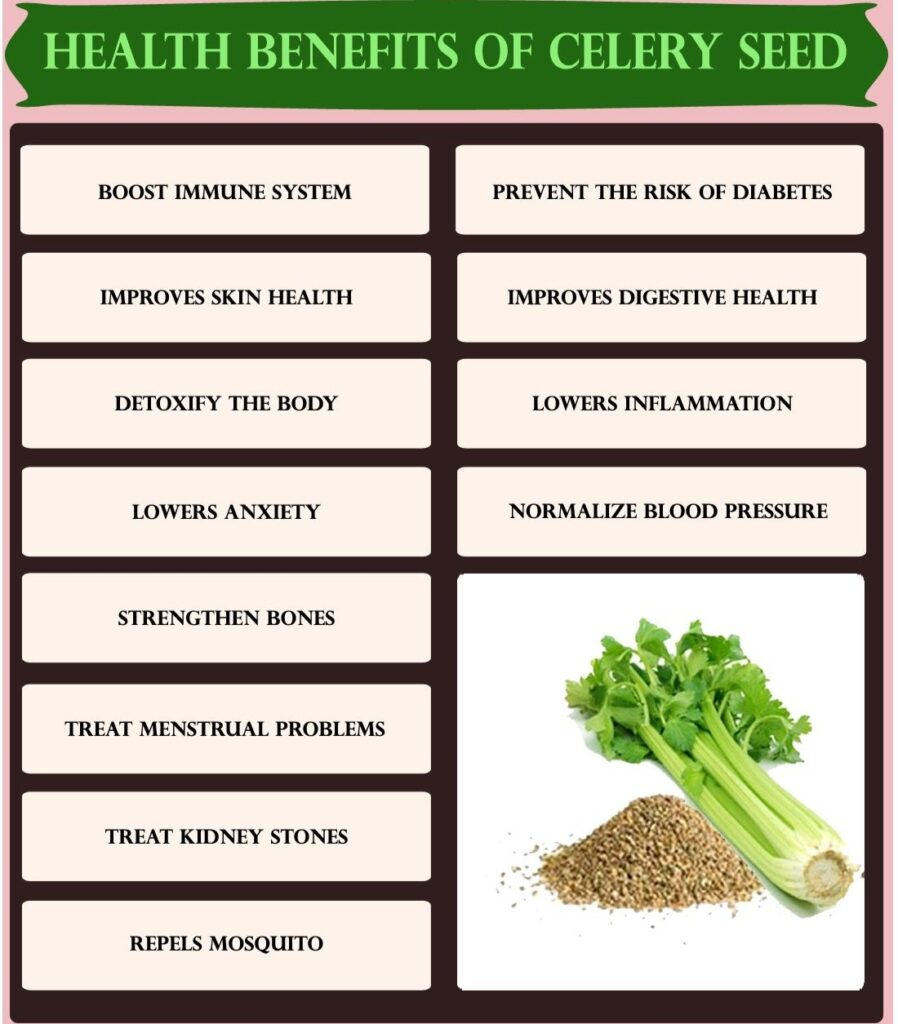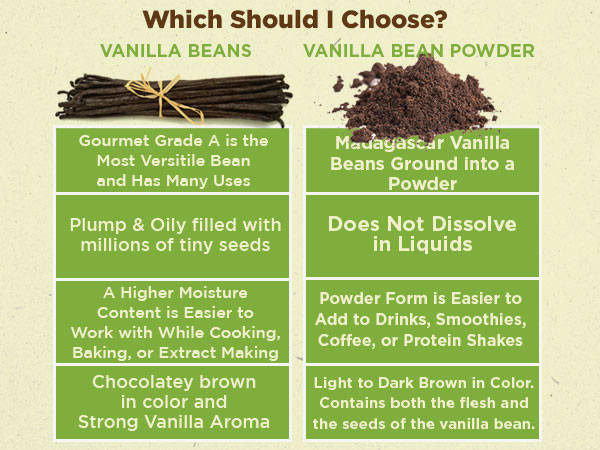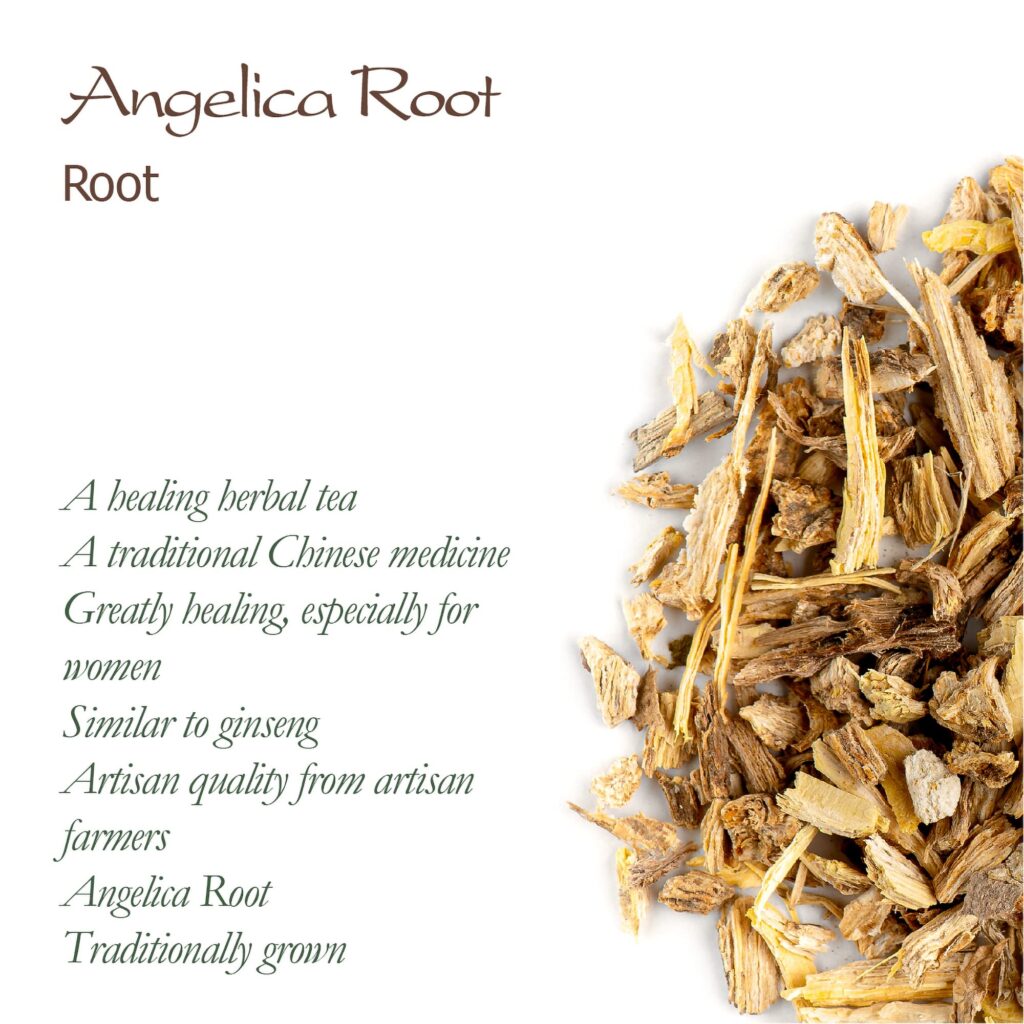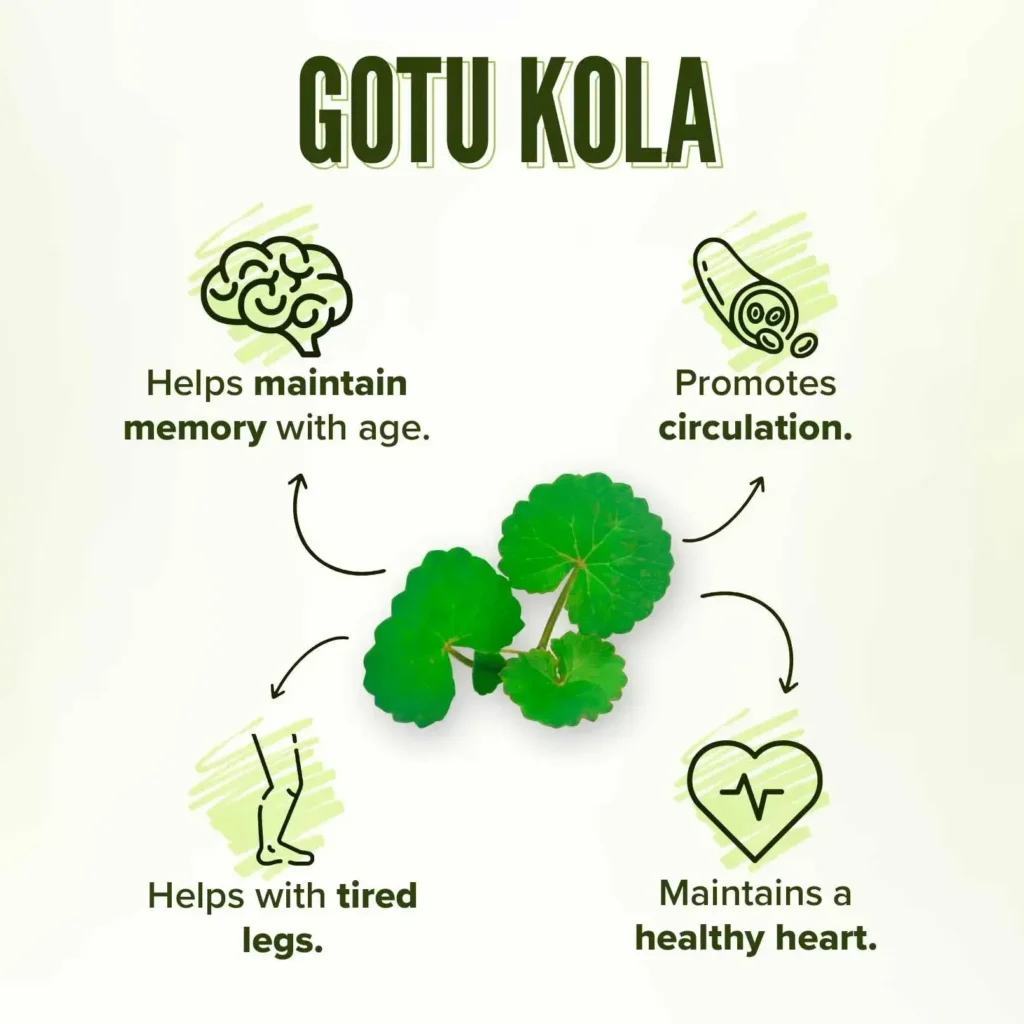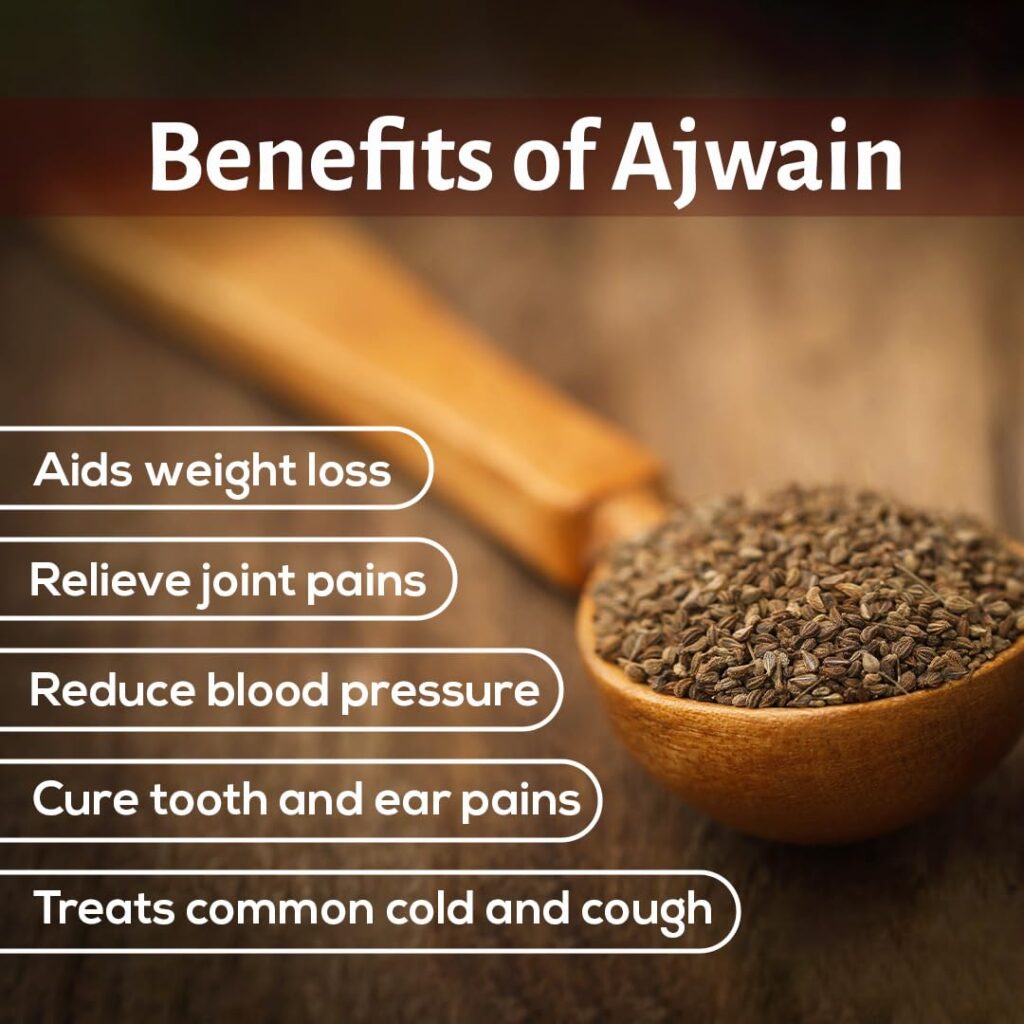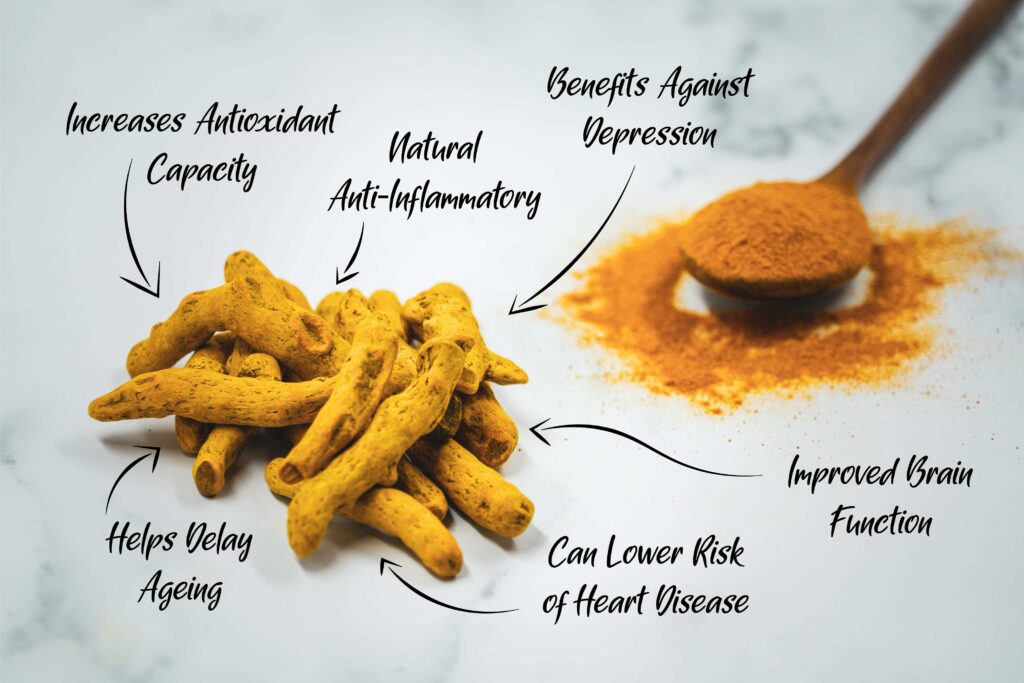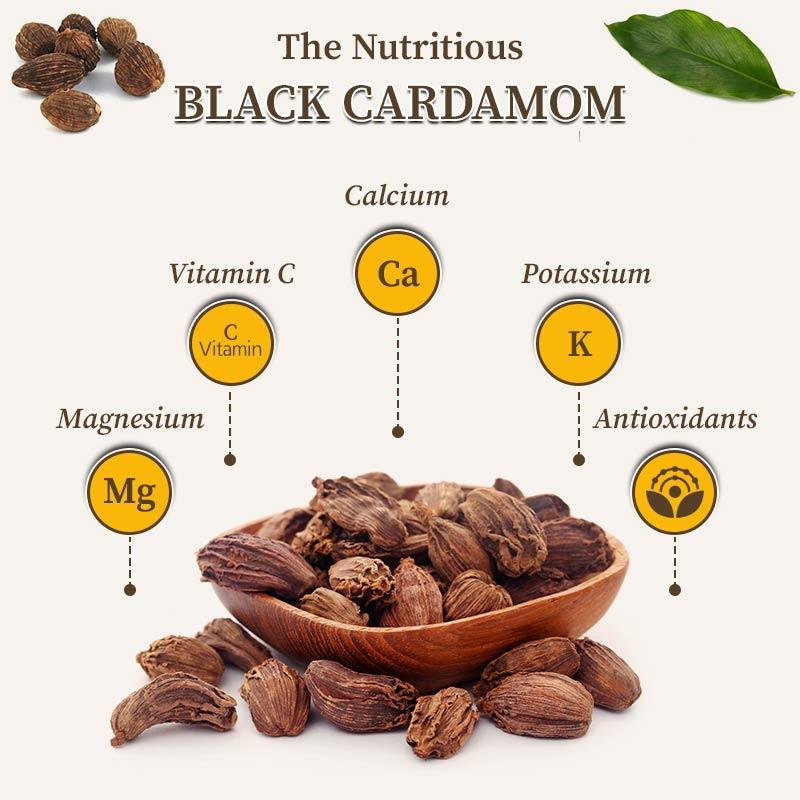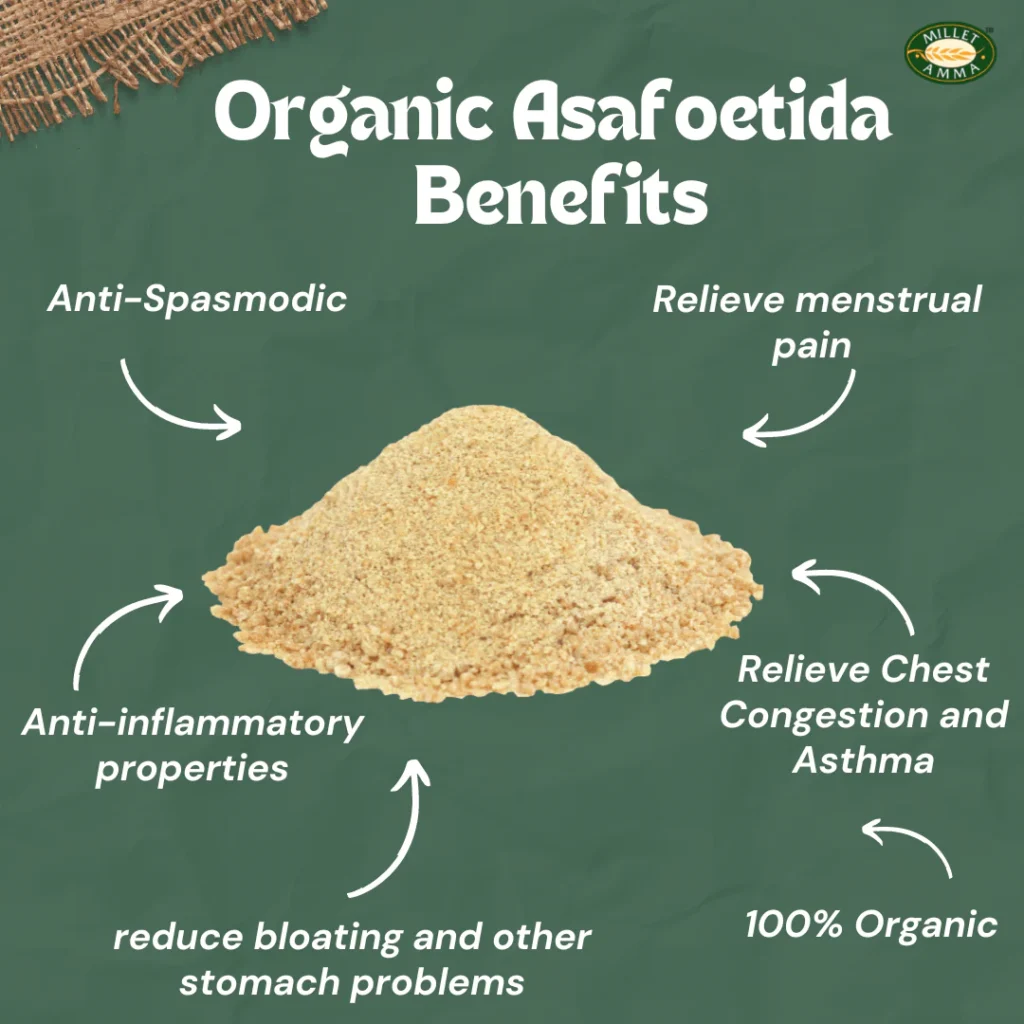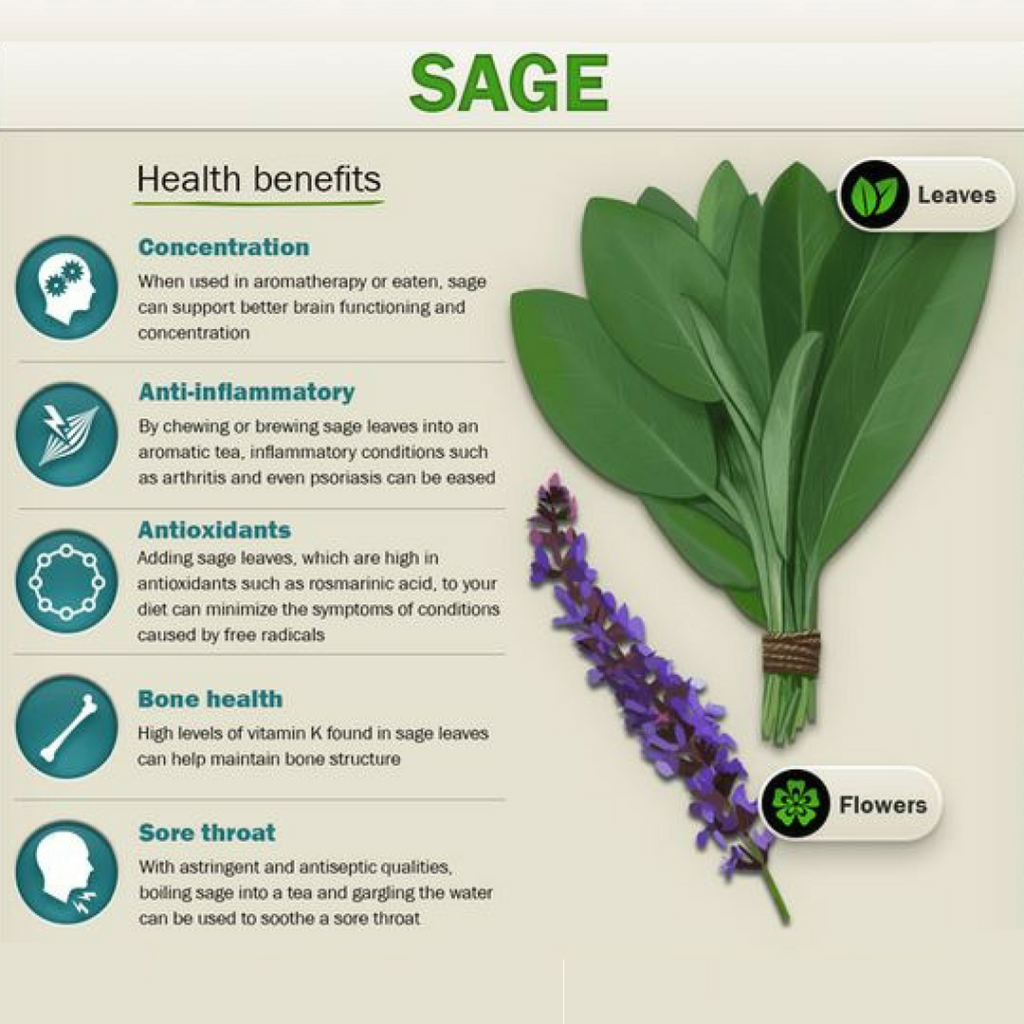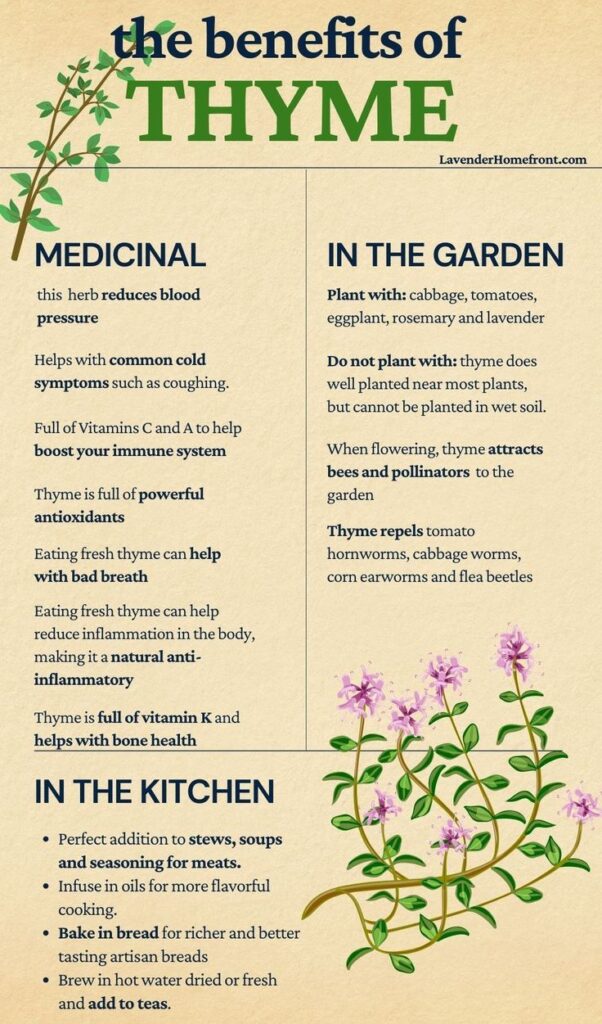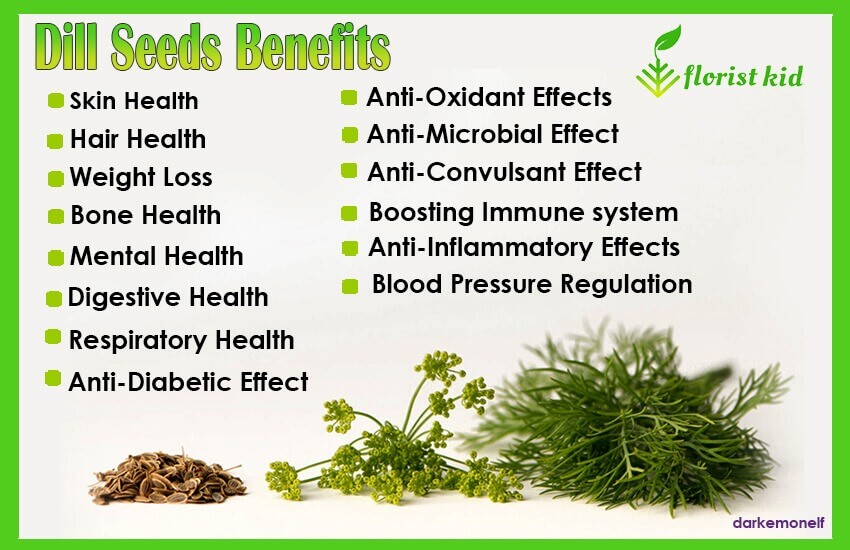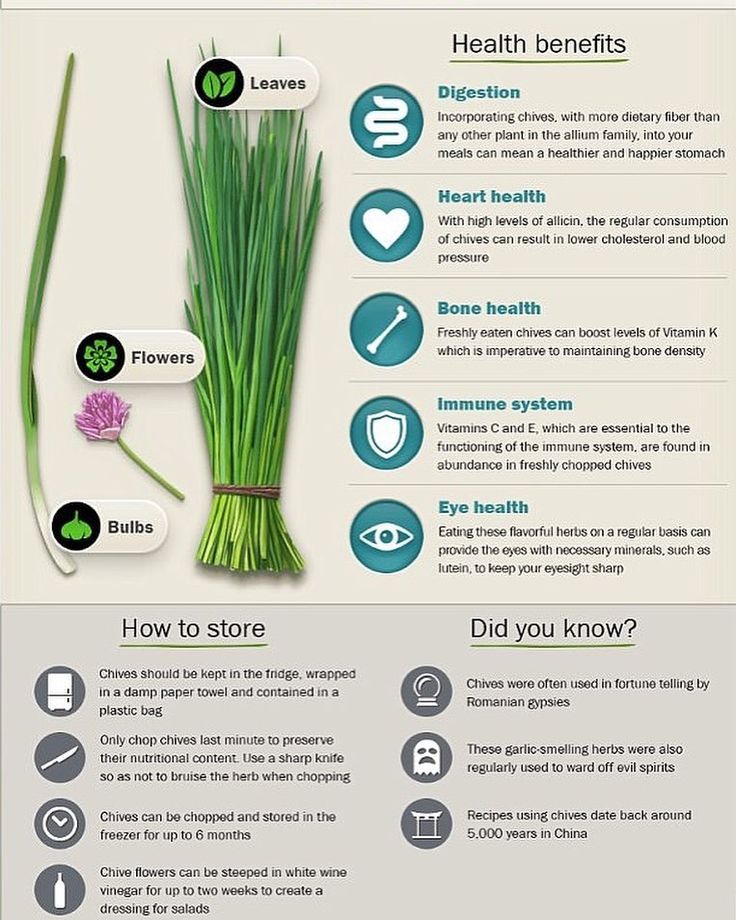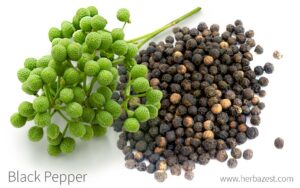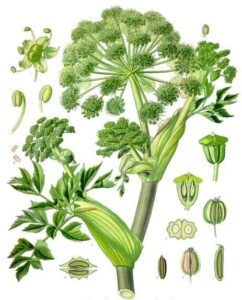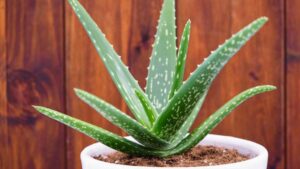Remedies
Daily Health Problems & Remedies
Drinking Water
Most people struggle with the proper quantity to drink water. While that’s important, its equally important that we are mindful of ‘how’ water is consumed.
- Try Avoiding Drinking water in Stteel Glass.
- Sit Down to Drink Water Rather than Standing
- Avoid drinking large amounts of water at once
- Water at room temperature or slightly warmed water is the best
- Drink Only When You are Thirsty
- Drink Water First Thing in the Morning
- Drink Water Stored in Silver and Copper Vessels
- Drink atleast one glass of water as soon as you wake up from bed, maximum of 3 to 4 glasses.
- Drinking a glass of water before going to bed avoids getting a stroke while sleeping.
- Drinking water before taking shower lowers blood pressure.
- Always drink in small sips and on an empty stomach also throughout the day.
- Water is to be had in between meals and not before or after eating food. It has ill effects. Drinking water immediately before food – reduces digestion Drinking water immediately after food – is similar to poison, it increases assimilation and makes people obese.
How To Prevent Joint Pains In Winters
Winter is typically associated with the qualities of Vata Dosha (dry and cold), which can negatively impact the joints. As we age, conditions like rheumatoid arthritis, osteoarthritis, and gout tend to worsen during the winter months, leading to increased pain.
To help protect your joints and keep them healthy this winter, Dr. Tarun Gupta, Senior Ayurvedic Consultant at SKK Ayurveda & Panchakarma, offers these tips:
Kapha Foods for Joint Health
Kapha is responsible for maintaining tissue integrity, body fluids, lubrication, flexibility, and firmness, all of which are essential for proper joint function. To support your joints, it’s important to include Kapha-balancing foods in your diet, particularly during the winter. These include astringent, mildly sweet fruits, herbal teas, and warm soups, which help balance Kapha in the body and promote pain-free joint movement.
Warm Ayurvedic Oil Massage
A warm, medicated oil massage can help relax muscles and joints. You can perform this at home using warm coconut oil or by preparing poultices, known as Potlis in Ayurveda. These can provide relief for frozen shoulders, spondylitis pain, arthritis, and other joint or muscle pains. To make a poultice, place 1 cup of rice powder, 3 tablespoons of grated fresh ginger, 1 teaspoon each of cardamom powder, clove powder, and rock salt into a clean muslin or cotton cloth and tie it into a pouch. Gently heat a cup of sesame oil in a pan, dip the pouch in the warm oil, and check its temperature before applying it to the affected joints. This treatment promotes blood circulation, relaxes the muscles, and offers effective pain relief.
Yoga for Joint Health
Certain yoga poses, such as Marjariasana (Cat Pose), Balasana (Child Pose), and Gomukhasana (Cow Face Pose), are known to enhance joint flexibility. However, avoid doing these poses if you are in pain. Practicing these asanas regularly will improve flexibility, fluidity, and strength in your joints and surrounding muscles.
Fenugreek (Methi) for Joint Pain Relief
Fenugreek is a powerful antioxidant with anti-inflammatory properties, making it an excellent choice for treating joint pain. To benefit from its effects, take one teaspoon of fenugreek powder mixed with honey, followed by a glass of lukewarm water. Sip slowly—don’t gulp down the entire glass at once—and you’ll likely notice a reduction in pain over time.
Living with joint pain can be challenging, especially as we age. If you have been experiencing joint pain for a while, it’s important not to ignore it. Seek medical advice at the first signs of discomfort to address the issue before it worsens.
Tips To Relieve Constipation – That Work!
Constipation is a prevalent and troublesome digestive issue that can significantly impact the quality of life. If left untreated, it may lead to discomfort, bleeding, pain, and potentially other health problems such as piles or fissures.
What is Constipation?
Constipation can be categorized into two types: chronic and acute. Chronic constipation refers to having fewer than one bowel movement a day for an extended period—weeks, months, or even years. Acute constipation occurs when a person, who typically has 1-4 bowel movements daily, experiences a reduction in frequency, such as skipping a day or alternating days without a bowel movement.
Why Are So Many People Affected by Constipation Today?
Modern lifestyles often contribute to poor health. Prolonged sitting, dehydration, irregular eating habits, and spending too much time indoors are common behaviors that lead to chronic constipation and other digestive issues. By aligning with the natural rhythms of the body through Ayurveda, we can restore digestive health, resolve constipation, and improve overall well-being.
How Can Ayurveda Help?
Ayurveda is a holistic healing system that focuses on achieving long-term health and wellness. It treats the individual as a whole, taking into account the connection between the mind, body, spirit, and nature. Ayurveda addresses the root causes of constipation with practical, natural remedies, leading to true healing and relief.
Simple Tips to Improve Elimination:
1. Incorporate Desi Ghee in Your Diet
Once a staple in every household, ghee has been unfairly labeled as fattening in modern times. However, ghee is rich in vitamins, antioxidants, and healthy fats. It acts as a natural lubricant for the digestive system, helping to ease bowel movements and improve digestion.
2. Drink Raisin Water
Soak 1/8 cup of raisins in 1 cup of water overnight, and consume the liquid on an empty stomach in the morning. This drink provides hydration and contains potassium, calcium, and iron—nutrients that support digestion and elimination.
3. Keep Dinner Light
The body’s metabolism slows down at night as it enters repair mode. To support this, avoid heavy meals after 7 pm. Opt for light dishes such as vegetable dalia (oats), khichdi (lentils and rice) with a spoonful of ghee, or warm vegetable soups.
4. Stay Active
A sedentary lifestyle can harm digestion. Engage in regular physical activity, such as walking after meals, doing household chores, or practicing yoga. These small activities can significantly support digestive health without requiring time for a formal workout.
5. Avoid White Flour
White flour (maida) is difficult to digest and can worsen constipation. It’s best to avoid baked goods (white bread, cakes, pizzas, etc.) and dishes like bhaturas, noodles, and pasta. Instead, opt for whole grains that are gentler on the digestive system.
Conclusion
Adopting these simple lifestyle changes can significantly improve digestion and relieve constipation. If you are dealing with chronic constipation, SKK Ayurveda offers personalized treatment plans based on your individual prakriti (body constitution). Reach out to us, and we can help you achieve better digestion and say goodbye to constipation for good.
How To Improve Lung Health
India, home to 18% of the world’s population, has the highest incidence of both acute and chronic respiratory disorders, as reported by the recent Global Burden of Disease (GBD) survey. Air pollution is a major contributor to these severe respiratory ailments, affecting people of all ages, even those in good health. The harmful effects of air pollution include, but are not limited to:
- Respiratory conditions such as asthma and chronic obstructive pulmonary disease (COPD)
- Lung cancer
- Cardiovascular diseases
- Weakened immunity, especially in children
- Reduced life expectancy
Fortunately, the following simple Ayurvedic practices can significantly improve lung health and help mitigate the effects of air pollution.
Nasya Karma (Nasal Therapy)
Nasya Karma involves instilling medicated drops into the nostrils, which helps prevent allergies caused by air pollutants. It is recommended to perform this therapy daily, preferably before bedtime and after waking up in the morning, under the supervision of an Ayurvedic practitioner. This process helps flush out pollutants from the nasal cavity and prevents them from entering the respiratory system. Using almond oil or cow’s ghee as nasal drops can be particularly beneficial.
Gandusha Karma (Oil Pulling)
For mouth breathers, oil pulling therapy acts as a barrier to prevent pollutants from entering the body through the mouth. This practice involves holding medicated oil in the mouth for 10-15 minutes before spitting it out. Oil pulling helps remove harmful bacteria, strengthens the mucous lining of the mouth, and improves the body’s ability to fight airborne allergens.
Breathing Exercises
Breathing techniques such as pranayama and kapalbhati are highly effective in cleansing the airways and counteracting the negative effects of air pollution. Regular practice of these exercises can improve lung function and increase resistance to respiratory issues.
Abhyanga (Massage)
Abhyanga, a traditional Ayurvedic massage, enhances blood circulation and helps eliminate toxins absorbed through the skin or inhaled into the body. Massaging with sesame oil or other medicated oils infused with herbs boosts immunity, leaving the body energized and better able to handle pollutants.
Swedana (Fomentation)
Swedana involves inducing sweating through the use of medicinal herbs. This process helps to liquefy and expel accumulated toxins (doshas) from the body. For respiratory health, facial steam using eucalyptus oil, basil oil, tea tree oil, and carom seeds can cleanse and strengthen the nasal passages, providing a protective barrier against pollutants.
Dhawana (Medicated Bath)
A medicated water bath can help flush out pollutants that have settled on the skin and mucous membranes. This practice supports the body in eliminating external toxins and helps maintain overall health.
Diet and Herbs
Eating freshly prepared warm food supports digestion and overall well-being. Incorporating ingredients like ginger and carom seeds in the diet can aid in respiratory health. Regular consumption of herbs such as Tulsi, Pippali, and Triphala can strengthen the respiratory system and boost immunity.
Always consult your Ayurvedic doctor before beginning any new fitness routines or making dietary changes.
Migraine Headache
Migraine headaches are a common and debilitating condition that affect millions of people worldwide. Characterized by intense, throbbing pain, often accompanied by nausea, vomiting, and sensitivity to light and sound, migraines can significantly impact daily life. While conventional medicine offers various treatments for migraines, Ayurveda, the ancient system of natural healing from India, provides a unique and holistic approach to understanding and managing this condition. In Ayurveda, migraines are considered a manifestation of imbalances within the body’s doshas (energetic principles), and their treatment involves addressing these imbalances using natural methods such as diet, lifestyle modifications, herbal remedies, and therapies.
What Causes Migraine Headaches According to Ayurveda?
Ayurveda views health as a balance of three fundamental energies or doshas: Vata, Pitta, and Kapha. Each dosha governs different aspects of the body and mind. Migraine headaches are primarily associated with an imbalance in the Pitta dosha, which is responsible for heat, digestion, and transformation. When Pitta becomes aggravated, it can lead to inflammation and excess heat in the head and body, triggering a migraine. Additionally, imbalances in Vata and Kapha can contribute to migraine headaches, though Pitta is often the dominant factor in most cases.
Pitta Imbalance: An excess of Pitta leads to overheating, which can cause inflammation in the brain, resulting in a migraine. Pitta is also linked to the digestive system, so digestive disturbances such as acidity or indigestion may accompany migraines. Emotional stress, anger, and anxiety can also exacerbate Pitta imbalances, leading to migraine attacks.
Vata Imbalance: Vata, associated with movement and circulation, can contribute to migraines when it becomes too aggravated. Vata imbalance often manifests as dry, erratic, or excessive movement of energy in the body. This can lead to tension, constriction, and irregular blood flow in the brain, which may trigger a migraine. Additionally, Vata imbalance can cause symptoms like dizziness, brain fog, and sensitivity to light, all of which are commonly experienced during a migraine attack.
Kapha Imbalance: Though less commonly the primary cause of migraines, Kapha dosha, when imbalanced, can contribute to the condition by increasing mucus and congestion in the sinuses. This may lead to sinus headaches or contribute to the overall discomfort experienced during a migraine.
The Role of Aggravating Factors
Several factors can trigger or aggravate the imbalances in the doshas that lead to migraines. According to Ayurveda, these triggers vary from person to person, depending on their constitution (Prakriti) and lifestyle. Common migraine triggers include:
Dietary Factors: Eating heavy, spicy, oily, or processed foods can increase Pitta and cause digestive disturbances. Excessive consumption of caffeinated beverages, alcohol, or chocolate may also exacerbate migraines.
Emotional Stress: Pitta is particularly affected by emotions such as anger, frustration, or stress. The intensity of these emotions can disrupt the balance of the doshas and lead to migraines. Stressful situations, whether physical or mental, can also trigger Vata imbalances and contribute to headaches.
Environmental Factors: Exposure to excessive heat, bright lights, or loud sounds can aggravate Pitta dosha and lead to migraine attacks. Weather changes, particularly hot or humid conditions, may also increase the likelihood of migraines.
Lifestyle Factors: Lack of proper sleep, excessive physical exertion, or staying awake for long periods can disturb both Vata and Pitta, leading to migraines. Irregular eating habits, skipping meals, or fasting for long periods can further trigger Pitta imbalances and migraines.
Ayurvedic Treatment for Migraine Headaches
Ayurveda offers a comprehensive approach to treating migraines by addressing the root causes of the condition. The treatment focuses on balancing the doshas, detoxifying the body, and improving digestion, all of which contribute to preventing and managing migraines. Here are some Ayurvedic treatments and practices that may help alleviate migraines:
Dietary Recommendations
- Cooling Foods: To balance excess Pitta, it is recommended to consume cooling foods that help reduce heat in the body. This includes foods such as cucumbers, melons, dairy products, coconut, leafy greens, and sweet fruits like apples and pears.
- Avoid Hot and Spicy Foods: Avoiding overly spicy, sour, and salty foods can help prevent Pitta aggravation. Reducing caffeine, alcohol, and foods that increase acidity, such as fried foods, also supports migraine prevention.
- Regular Meals: Eating meals at regular intervals throughout the day and avoiding overeating or skipping meals can help maintain digestive balance and prevent Vata and Pitta imbalances that lead to migraines.
Herbal Remedies
- Brahmi: Known for its calming and cooling properties, Brahmi (Bacopa monnieri) is a powerful herb used in Ayurveda to reduce stress and calm the nervous system. It can help reduce the frequency and intensity of migraines by calming Pitta imbalances and promoting mental clarity.
- Ashwagandha: This adaptogenic herb is used to reduce stress and anxiety, which are common triggers for migraines. Ashwagandha helps balance Vata and Pitta doshas, reducing the likelihood of migraine attacks caused by emotional stress.
- Turmeric: With its anti-inflammatory properties, turmeric is often used to reduce the inflammation in the brain that may contribute to migraines. It also has a cooling effect, which can help balance Pitta.
- Shankhapushpi: Known for its ability to calm the mind and improve cognitive function, Shankhapushpi is an Ayurvedic herb used to treat migraines associated with stress and anxiety.
Ayurvedic Therapies
- Shirodhara: This therapy involves pouring warm, medicated oil (often infused with herbs like Brahmi) over the forehead in a continuous stream. Shirodhara is known for its ability to calm the mind, reduce stress, and balance Pitta dosha. It can be highly effective in treating stress-induced migraines.
- Nasya: As mentioned earlier, Nasya involves the administration of herbal oils or powders through the nostrils. This treatment helps clear the sinuses, reduce congestion, and balance the doshas, making it an effective treatment for migraines caused by sinus issues or Pitta imbalance.
- Abhyanga (Massage): Regular massage using warm, medicated oils can help alleviate tension in the head, neck, and shoulders, areas often affected by migraines. Abhyanga helps reduce Vata imbalances and improve circulation, preventing migraines triggered by physical tension.
Breathing Exercises and Yoga
- Pranayama: Breathing exercises such as Anulom Vilom (alternate nostril breathing) and Kapalbhati (skull shining breath) can help calm the mind, reduce stress, and improve oxygenation to the brain. These exercises help balance both Vata and Pitta, making them effective in managing migraines.
- Yoga Asanas: Specific yoga poses, such as Supta Baddha Konasana (reclining bound angle pose) and Adho Mukha Svanasana (downward-facing dog), can help release tension in the head, neck, and shoulders. Regular yoga practice promotes relaxation, reduces stress, and helps balance the doshas, all of which contribute to preventing migraines.
Lifestyle Modifications
- Regular Sleep Schedule: Maintaining a consistent sleep routine helps regulate the doshas, particularly Vata and Pitta. Proper rest can reduce the frequency of migraines caused by sleep deprivation or stress.
- Stress Management: Practicing meditation, mindfulness, and relaxation techniques can significantly reduce stress and prevent migraines associated with emotional triggers.
Conclusion
In Ayurveda, migraines are seen as a manifestation of dosha imbalances, particularly Pitta, Vata, and sometimes Kapha. By addressing the root cause of these imbalances through a combination of dietary adjustments, herbal remedies, lifestyle modifications, and Ayurvedic therapies, it is possible to manage and even prevent migraines in a natural and holistic way. Ayurveda offers a unique approach to migraine relief by promoting balance in the body and mind, reducing stress, improving digestion, and using natural remedies to soothe and calm the system. However, it is important to consult with a qualified Ayurvedic practitioner before starting any new treatment plan to ensure it is tailored to your specific needs and constitution.
Acidity - Causes and How to Prevent It
Acidity, also known as acid reflux or gastroesophageal reflux disease (GERD), is a common digestive issue that affects millions of people worldwide. It occurs when the stomach acid flows back into the esophagus, leading to a burning sensation in the chest (heartburn), a sour taste in the mouth, and discomfort. In Ayurveda, acidity is seen as an imbalance in the digestive fire or Agni, which is responsible for the transformation of food into energy and nutrients. When Agni becomes weak or disturbed, it can lead to the production of excess stomach acid, resulting in acidity. Ayurveda offers a holistic approach to managing acidity by addressing the root cause of the imbalance, restoring digestive health, and promoting overall wellness.
What Causes Acidity According to Ayurveda?
In Ayurveda, acidity is primarily linked to an imbalance in the Pitta dosha, which governs the digestive process, metabolism, and heat in the body. Pitta is responsible for the secretion of digestive enzymes and acids, and when it becomes aggravated, it can lead to excessive acidity, inflammation, and discomfort in the stomach and esophagus. However, other doshas, particularly Vata and Kapha, may also contribute to acidity depending on an individual’s unique constitution (Prakriti) and lifestyle factors.
Pitta Imbalance: Pitta is associated with heat, intensity, and digestion. When Pitta becomes aggravated due to factors like stress, poor diet, or excessive heat, it can lead to an overproduction of stomach acid. This excess acid may travel up into the esophagus, causing acid reflux, heartburn, and discomfort.
Vata Imbalance: Vata governs movement and the nervous system. When Vata becomes imbalanced, it can lead to irregular and unpredictable digestion, contributing to bloating, gas, and acidity. Stress and anxiety are common causes of Vata imbalance and can exacerbate symptoms of acidity by disrupting normal digestion.
Kapha Imbalance: Kapha is associated with the body’s structure, fluids, and lubrication. When Kapha is imbalanced, it can lead to sluggish digestion and the accumulation of excess mucus in the digestive system. This may contribute to bloating and heaviness, which can worsen the symptoms of acidity.
Ayurvedic Perspective on the Role of Digestive Fire (Agni)
In Ayurveda, the concept of Agni (digestive fire) is central to understanding the root cause of acidity. Agni is responsible for breaking down food, absorbing nutrients, and eliminating waste products from the body. When Agni is strong and balanced, digestion is efficient, and the body remains healthy. However, when Agni becomes weak or irregular, it can lead to improper digestion, resulting in the production of excess acid or undigested food in the stomach, which causes acidity.
A weak or deranged Agni may be caused by several factors, including poor dietary habits, stress, irregular eating patterns, overeating, or consuming foods that aggravate Pitta dosha, such as spicy, sour, and oily foods. Ayurveda emphasizes the importance of maintaining a balanced Agni to prevent digestive issues like acidity and promote optimal health.
Ayurvedic Treatments for Acidity
Ayurveda offers a range of natural remedies and lifestyle practices to address the root causes of acidity, balance digestive fire (Agni), and restore harmony in the body. These treatments focus on soothing the stomach, reducing excess heat, and improving overall digestion. Here are some Ayurvedic treatments and practices that can help manage acidity:
Dietary Recommendations
- Cooling and Soothing Foods: To balance excess Pitta, Ayurveda recommends consuming cooling and soothing foods that help calm the digestive system. Foods such as cucumbers, melons, coconut, dairy products, and leafy greens can help reduce heat and acidity. Sweet fruits like apples, pears, and bananas are also beneficial for soothing the stomach.
- Avoid Spicy, Sour, and Oily Foods: Spicy, sour, and oily foods can aggravate Pitta and increase the production of stomach acid. Foods like citrus fruits, fried foods, pickles, and tomatoes should be avoided or consumed in moderation to prevent acidity.
- Warm, Light Meals: Ayurveda advises eating warm, freshly cooked meals that are easy to digest. Light, simple foods like soups, khichdi (a combination of rice and lentils), and cooked vegetables are gentle on the stomach and help maintain a balanced Agni.
- Smaller, More Frequent Meals: Eating smaller meals throughout the day rather than large meals helps to prevent overloading the digestive system. This approach supports steady digestion and prevents acidity from developing.
Herbal Remedies
Several Ayurvedic herbs are known for their ability to soothe the stomach, balance Pitta, and improve digestion. Some of the most effective herbs for treating acidity include:
- Amla (Indian Gooseberry): Amla is rich in vitamin C and has cooling properties that help balance Pitta. It promotes healthy digestion and reduces acidity. Amla can be consumed in the form of powder or juice.
- Licorice (Yashtimadhu): Licorice is a well-known herb that helps protect the stomach lining and reduce inflammation caused by excess acid. It has soothing and anti-inflammatory properties that help manage acid reflux and heartburn.
- Slippery Elm: Slippery elm is another soothing herb that helps protect the mucous membranes of the stomach and esophagus. It helps reduce irritation caused by acidity and promotes healing of the digestive tract.
- Ginger: Ginger has anti-inflammatory and digestive properties that help reduce the production of stomach acid and improve overall digestion. A small amount of fresh ginger, either as a tea or added to food, can help alleviate acidity.
- Triphala: Triphala, a combination of three fruits (Amla, Haritaki, and Bibhitaki), is a well-known Ayurvedic remedy for promoting healthy digestion and balancing Agni. It helps regulate bowel movements, improves digestion, and reduces acidity.
Ayurvedic Therapies
Ayurveda offers various therapeutic treatments that can help manage acidity by balancing the doshas and improving digestion. Some of the most common therapies include:
- Abhyanga (Oil Massage): Abhyanga is a traditional Ayurvedic massage that uses warm, medicated oils to soothe the body and calm the nervous system. This therapy helps reduce stress, which is a common trigger for acidity, and promotes overall digestion.
- Shirodhara: This therapy involves pouring warm, medicated oil over the forehead in a continuous stream. Shirodhara helps calm the mind, reduce stress, and promote relaxation. It is particularly beneficial for individuals whose acidity is triggered by emotional factors like anxiety and stress.
- Nasya (Nasal Therapy): Nasya involves the administration of herbal oils or powders through the nostrils. It helps clear the sinuses, reduce congestion, and balance the doshas, particularly Pitta. Nasya can be helpful for individuals who experience acidity along with sinus issues or respiratory discomfort.
Lifestyle Modifications
- Stress Management: Stress is a major contributor to acidity, as it disrupts digestion and exacerbates Pitta imbalances. Practicing stress-reduction techniques such as meditation, yoga, and deep breathing can help manage acidity by calming the mind and promoting balanced digestion.
- Regular Sleep Patterns: Ayurveda emphasizes the importance of good sleep hygiene for maintaining digestive health. Ensuring adequate rest helps regulate Agni and supports proper digestion.
- Avoid Eating Late at Night: Ayurveda advises avoiding heavy meals late at night, as this can overload the digestive system and disrupt the normal functioning of Agni. It is best to finish eating at least two to three hours before bedtime.
Conclusion
Acidity, or acid reflux, is a common condition that results from an imbalance in the digestive fire (Agni) and an aggravated Pitta dosha. Ayurveda views acidity as a sign of improper digestion and suggests a comprehensive approach to restore balance through diet, herbs, therapies, and lifestyle changes. By following Ayurvedic principles to balance the doshas, soothe the digestive system, and improve Agni, individuals can effectively manage and prevent acidity. As with any health condition, it is important to consult with a qualified Ayurvedic practitioner before starting a new treatment plan to ensure it is tailored to your unique needs and constitution. Through holistic care, Ayurveda offers a natural and effective way to address the root causes of acidity and promote long-term digestive health.
Ulcers - Causes and How to Prevent It
Ulcers, specifically peptic ulcers, are open sores that develop on the inner lining of the stomach, small intestine, or esophagus. They can cause a range of symptoms, including burning stomach pain, bloating, indigestion, nausea, and in severe cases, bleeding. While modern medicine typically attributes ulcers to an infection caused by Helicobacter pylori bacteria or the excessive use of nonsteroidal anti-inflammatory drugs (NSAIDs), Ayurveda offers a holistic understanding of ulcers, linking them to an imbalance in the body’s digestive system, particularly involving the Pitta dosha and Agni (digestive fire). Ayurveda emphasizes addressing the root causes of ulcers through a combination of diet, lifestyle modifications, and natural remedies.
What Causes Ulcers According to Ayurveda?
In Ayurveda, ulcers are primarily associated with an imbalance in Pitta dosha, which governs heat, digestion, and metabolism in the body. Pitta is responsible for the production of digestive enzymes and stomach acids. When Pitta becomes aggravated due to factors like poor diet, stress, or environmental influences, it can lead to excessive production of stomach acid, which can erode the protective lining of the stomach and intestines, resulting in ulcers.
However, ulcers may also be associated with imbalances in Vata and Kapha doshas, particularly when the body’s overall balance is disrupted:
Pitta Imbalance: Excess heat in the digestive system leads to hyperacidity, inflammation, and the weakening of the mucosal lining of the stomach. This may cause ulcer formation, particularly when the digestive fire (Agni) becomes too intense, leading to improper digestion and an overproduction of acid.
Vata Imbalance: Vata governs movement and digestion. When Vata is imbalanced, it may cause dryness, irregular digestion, and reduced motility of the digestive system. This can lead to poor absorption of nutrients and the accumulation of waste products, further aggravating Pitta and contributing to ulcer formation.
Kapha Imbalance: While Kapha is typically associated with mucus and structure, an imbalance in Kapha can lead to the accumulation of excess mucus in the stomach lining, which can exacerbate the effects of acid and increase the likelihood of ulceration.
In Ayurveda, ulcers are seen as a result of the internal environment being out of balance, and treating them involves restoring harmony between the doshas, particularly calming the Pitta dosha and strengthening the digestive fire (Agni).
Ayurvedic Concept of Agni and Ulcers
The concept of Agni (digestive fire) plays a crucial role in understanding the development of ulcers in Ayurveda. Agni is responsible for the digestion, absorption, and assimilation of food, as well as the elimination of waste. When Agni is balanced, digestion is efficient, and the body can properly break down food and absorb nutrients. However, when Agni is disturbed, it can lead to a variety of digestive issues, including ulcers.
Mandagni (Weak Digestive Fire): When Agni is weak, it can lead to improper digestion of food. This results in the accumulation of undigested food particles (called Ama) in the stomach and intestines. These toxins can irritate the stomach lining, leading to inflammation and ulceration.
Teekshnagni (Intense Digestive Fire): On the other hand, when Agni is too strong or overactive, it leads to excessive production of digestive juices, particularly stomach acid. This can burn the stomach lining and cause ulcers. An aggravated Pitta dosha is a primary cause of Teekshnagni, which can lead to excessive heat and acidity.
Ayurvedic Treatments for Ulcers
Ayurveda approaches the treatment of ulcers holistically, focusing on restoring balance in the digestive system, calming the Pitta dosha, and strengthening Agni. This involves dietary changes, lifestyle modifications, herbal remedies, and therapies designed to soothe the digestive tract and promote healing.
Dietary Recommendations for Ulcers
Soothing, Cooling Foods: To balance Pitta, Ayurveda recommends consuming cooling and soothing foods. These foods help to reduce heat and inflammation in the stomach. Examples include cucumbers, melons, coconut water, dairy products like milk and ghee, and leafy greens. Fresh, homemade food is preferred as it is easier to digest and nourishing for the stomach lining.
Avoid Spicy, Sour, and Oily Foods: Spicy, sour, and oily foods aggravate Pitta and increase acidity in the stomach, which can irritate the ulcer. Foods such as fried foods, citrus fruits, tomatoes, and hot peppers should be avoided.
Warm, Soft Foods: Ayurveda recommends eating warm, soft, and easily digestible foods, such as soups, khichdi (a mixture of rice and lentils), porridge, and boiled vegetables. These foods are gentle on the stomach and help in healing ulcers by reducing irritation and promoting better digestion.
Smaller, Frequent Meals: Eating smaller meals throughout the day rather than large meals helps reduce the burden on the digestive system. It also prevents the stomach from becoming too acidic, which can aggravate ulcers.
Herbal Remedies for Ulcers
Ayurveda uses a range of herbs that have healing properties and help soothe the stomach lining, reduce inflammation, and promote overall digestive health. Some commonly used herbs for ulcers include:
Amla (Indian Gooseberry): Amla is a powerful herb known for its high vitamin C content and cooling properties. It helps reduce acidity, promotes the healing of ulcers, and strengthens the digestive system. Amla powder or juice can be consumed to soothe the stomach lining and balance Pitta.
Licorice (Yashtimadhu): Licorice is well-known for its ability to soothe the digestive tract and protect the mucous membranes. It has anti-inflammatory and healing properties that help to heal ulcers and reduce symptoms like heartburn and indigestion. It can be consumed as a powder or in a decoction.
Chamomile: Chamomile has anti-inflammatory and calming properties that help reduce irritation in the stomach. It can be consumed as a tea to soothe the digestive system and reduce symptoms of ulcers.
Tulsi (Holy Basil): Tulsi is another herb with anti-inflammatory, anti-bacterial, and soothing properties. It helps reduce acidity and inflammation in the stomach and supports overall digestive health.
Slippery Elm: Slippery elm is known for its mucilage content, which helps to coat and soothe the stomach lining. It reduces inflammation and promotes healing of ulcers.
Ayurvedic Therapies for Ulcers
Ayurveda also offers several therapeutic treatments to help balance the doshas, calm Pitta, and promote healing of ulcers:
Abhyanga (Oil Massage): Abhyanga, or oil massage, is a traditional Ayurvedic therapy that helps to calm the body and mind, reduce stress, and improve digestion. Regular Abhyanga with warm, medicated oils helps to soothe the digestive system and promote overall health.
Shirodhara: Shirodhara involves pouring warm oil over the forehead, which helps to calm the nervous system and reduce stress. Since stress is a major contributor to ulcer formation, Shirodhara can be an effective therapy to support healing.
Nasya: Nasya is an Ayurvedic therapy that involves the administration of medicated oils or powders through the nostrils. This treatment helps to clear the sinuses, calm Pitta, and improve digestion.
Lifestyle Modifications for Ulcers
Stress Management: Stress is a significant contributing factor to ulcer formation, as it can increase Pitta and disturb the digestive fire. Stress-reduction techniques such as meditation, yoga, deep breathing, and mindfulness can help calm the mind and reduce the impact of stress on digestion.
Adequate Sleep: Ayurveda emphasizes the importance of restful sleep in maintaining good health. A regular sleep pattern helps to balance the doshas and supports the healing process for ulcers.
Regular, Moderate Exercise: Gentle exercises such as walking, yoga, and stretching can help improve digestion, reduce stress, and maintain a balanced Pitta.
Conclusion
In Ayurveda, ulcers are seen as a result of an imbalance in the digestive system, particularly an aggravated Pitta dosha and weak or excessive Agni. The Ayurvedic approach to treating ulcers focuses on soothing the digestive tract, balancing Pitta, and strengthening the digestive fire. By adopting a holistic treatment plan that includes a balanced diet, herbal remedies, stress management, and lifestyle modifications, individuals can promote healing and prevent the recurrence of ulcers. It is important to consult with an experienced Ayurvedic practitioner before beginning any treatment plan to ensure it is tailored to your unique constitution and needs. Through a combination of diet, herbs, therapies, and mindful living, Ayurveda offers an effective and natural way to heal ulcers and maintain digestive health.
Pimples
Pimples, also known as acne, are a common skin condition that affects people of all ages, particularly teenagers and young adults. They occur when hair follicles become clogged with oil, dead skin cells, and bacteria, leading to inflammation, redness, and the formation of pustules, blackheads, or cysts. While modern medicine often treats pimples with topical treatments and medications, Ayurveda takes a more holistic approach, focusing on the root causes of acne, the balance of the body’s internal systems, and natural remedies that promote overall skin health.
What Causes Pimples According to Ayurveda?
In Ayurveda, pimples and acne are primarily associated with an imbalance in the Kapha, Pitta, and Vata doshas, each of which can influence the skin and its health in different ways. The doshas represent the body’s energetic forces, and when one or more of these doshas become imbalanced, it can lead to various skin conditions, including pimples.
Pitta Dosha and Pimples: Pitta governs heat, metabolism, and transformation in the body. When Pitta becomes aggravated, it can cause excess heat in the system, leading to an increase in oil production, inflammation, and irritation of the skin. This is one of the main contributors to the formation of pimples. An aggravated Pitta can also lead to conditions like cystic acne, which is characterized by deep, painful pimples that are often red and inflamed. Factors such as stress, poor diet, exposure to heat, and hormonal changes can exacerbate Pitta and trigger breakouts.
Kapha Dosha and Pimples: Kapha is responsible for lubrication, moisture, and structure in the body. When Kapha is imbalanced, it leads to an excess of oil and mucus, which can clog the pores, trap bacteria, and contribute to the formation of pimples. This is particularly true when Kapha leads to the accumulation of stagnant toxins (Ama) in the body, which can accumulate in the skin and cause blockages in the pores, leading to acne.
Vata Dosha and Pimples: Vata governs movement and dryness in the body. When Vata is imbalanced, it can lead to dryness, dehydration, and irregular circulation, which can affect the skin’s health. Dry, flaky skin can cause the formation of blackheads, and when combined with excess oil from Kapha, it may lead to the formation of pimples. Vata imbalances can also exacerbate the effects of stress and anxiety, which are common triggers for acne flare-ups.
In summary, pimples are caused by an interplay of imbalances between these doshas, with excess heat (Pitta) and oiliness (Kapha) being the primary contributors. Toxins and impurities within the body (Ama) also play a role in causing blockages in the skin, leading to breakouts.
Ayurvedic Approach to Treating Pimples
Ayurveda offers a holistic approach to treating pimples, which involves balancing the doshas, cleansing the body of toxins, strengthening the digestive fire (Agni), and promoting overall skin health. Ayurvedic treatments for pimples address both internal and external factors to promote clear, healthy skin.
Dietary Recommendations for Clear Skin
A balanced diet plays a crucial role in managing pimples and maintaining healthy skin. Ayurveda emphasizes the importance of eating foods that support the internal balance of the doshas and help clear toxins from the body.
Cooling and Anti-inflammatory Foods: To balance Pitta and reduce inflammation, Ayurveda recommends consuming cooling, anti-inflammatory foods. These include cucumbers, leafy greens, coconut, melons, and dairy products like milk and ghee. These foods help reduce heat in the body and soothe the skin.
Avoid Hot, Spicy, and Oily Foods: Foods that aggravate Pitta, such as spicy, fried, and oily foods, should be avoided. These foods can increase heat and oil production in the body, leading to breakouts.
Detoxifying Foods: Incorporating foods that promote detoxification, such as bitter greens (like neem and dandelion), turmeric, and ginger, helps eliminate toxins (Ama) and supports digestion, which is key to maintaining clear skin.
Regular, Balanced Meals: Ayurveda recommends eating regular, balanced meals to support optimal digestion (Agni). Irregular eating habits and overeating can lead to the accumulation of toxins and digestive imbalances, contributing to acne.
Herbal Remedies for Pimples
Ayurveda uses a variety of herbs that help to purify the blood, reduce inflammation, and balance the doshas, which can all contribute to clearer skin.
Neem: Neem is one of the most widely used herbs in Ayurveda for treating skin conditions, including pimples. Its antibacterial, anti-inflammatory, and detoxifying properties help to cleanse the skin, reduce inflammation, and combat bacterial infections that contribute to acne. Neem can be taken internally as a powder or capsule or applied externally as a paste or oil.
Turmeric: Turmeric is known for its powerful anti-inflammatory and antioxidant properties. It helps reduce redness, inflammation, and swelling associated with pimples. It can be applied topically as a paste mixed with water or honey or consumed internally in food or as a supplement.
Aloe Vera: Aloe vera has soothing and cooling properties, making it ideal for calming inflamed skin and promoting healing. It helps reduce redness and swelling in pimples and accelerates the skin’s healing process. Aloe vera gel can be applied directly to the affected area.
Tulsi (Holy Basil): Tulsi is revered in Ayurveda for its antimicrobial and anti-inflammatory properties. It helps reduce the frequency of breakouts and clears the skin. Tulsi leaves can be crushed and applied as a paste, or its juice can be consumed for internal detoxification.
Ashwagandha: Stress is a significant trigger for pimples, and ashwagandha is an adaptogenic herb that helps reduce stress and balance the hormones that contribute to acne. It can be taken as a supplement or powder to support overall wellness and skin health.
Ayurvedic Treatments for Pimples
Several Ayurvedic therapies can be used externally to treat pimples and improve skin health.
Abhyanga (Oil Massage): Regular Abhyanga with herbal oils helps detoxify the skin, improve blood circulation, and calm the Pitta dosha. This is particularly beneficial for individuals with acne-prone skin. For oily skin, sesame oil infused with herbs like neem or turmeric is ideal.
Ubtan: Ubtan is a traditional Ayurvedic paste made from herbs, grains, and oils, used for exfoliating and cleansing the skin. Ingredients like chickpea flour, turmeric, and sandalwood powder are commonly used in ubtan to cleanse the skin, remove impurities, and reduce the occurrence of pimples.
Shirodhara: Shirodhara, the practice of pouring warm oil on the forehead, is beneficial for reducing stress and calming the mind. Since stress is a major factor in the onset of pimples, this therapy can help reduce flare-ups and improve overall skin health.
Lifestyle Modifications for Clear Skin
In addition to dietary changes and herbal remedies, certain lifestyle modifications are crucial for managing pimples and maintaining healthy skin.
Proper Skincare Routine: A consistent skincare routine that involves gentle cleansing, exfoliation, and moisturizing is key to managing acne. Ayurveda recommends using natural, gentle products that soothe and balance the skin rather than harsh chemicals.
Stress Management: As stress can trigger hormonal imbalances and increase the likelihood of breakouts, stress-reduction techniques like meditation, yoga, and deep breathing exercises are essential. These practices help reduce Pitta and promote emotional balance.
Adequate Sleep: Getting enough restful sleep is crucial for skin health. Ayurveda emphasizes the importance of a regular sleep routine to allow the body to repair and regenerate overnight.
Conclusion
Pimples and acne are primarily a result of imbalances in the Pitta, Kapha, and Vata doshas, which affect the skin’s ability to maintain a clear, healthy complexion. Ayurveda offers a holistic approach to treating pimples, focusing on balancing the doshas, purifying the body of toxins, and promoting overall wellness. By adopting a diet that supports skin health, using herbal remedies to reduce inflammation and detoxify the body, and following Ayurvedic skincare and lifestyle practices, individuals can effectively manage and prevent pimples. As always, it is important to consult an Ayurvedic practitioner to develop a personalized treatment plan based on your unique constitution and needs.
Hair Loss
Hair loss, also known as alopecia, is a common concern affecting both men and women across the world. While occasional hair shedding is normal, excessive hair loss or thinning can be distressing and may indicate an underlying health issue. Ayurveda, an ancient system of natural healing, offers a holistic approach to addressing hair loss by focusing on the balance of the body’s doshas, promoting healthy circulation, improving nutrition, and providing natural treatments for the scalp and hair.
Causes of Hair Loss According to Ayurveda
In Ayurveda, hair loss is primarily linked to imbalances in the three doshas: Vata, Pitta, and Kapha. These doshas represent the three primary energies that govern the body’s functions. When any of the doshas become imbalanced, it can lead to various health conditions, including hair loss. Here’s a breakdown of how each dosha influences hair health:
Vata Dosha:
- Vata governs movement, dryness, and circulation in the body. When Vata becomes aggravated, it can lead to dryness, thinning, and brittleness of the hair. Individuals with an imbalance in Vata may experience hair loss along with a dry, flaky scalp, and lack of shine in their hair.
- Excessive stress, poor sleep, and a diet lacking in essential fats can contribute to an increase in Vata and, consequently, hair loss.
Pitta Dosha:
- Pitta is responsible for transformation, metabolism, and heat in the body. When Pitta is aggravated, it can lead to excessive heat in the body, which may affect the hair follicles and cause hair thinning or baldness, particularly in the crown or temples.
- Stress, hormonal changes, poor digestion, and excessive consumption of spicy or greasy foods can aggravate Pitta and contribute to hair loss. This type of hair loss is often seen as premature graying or thinning.
Kapha Dosha:
- Kapha governs lubrication, moisture, and structure. While Kapha imbalances are less frequently the cause of hair loss, they can contribute to sluggish circulation and blockages in the hair follicles, leading to poor hair growth or excessive hair shedding. Kapha-related hair loss is often accompanied by oily scalp or dandruff.
- A diet that is heavy and rich in processed foods, along with a sedentary lifestyle, can worsen Kapha imbalances and hinder hair health.
Ayurvedic Principles for Preventing Hair Loss
Ayurveda treats hair loss by focusing on restoring balance to the body’s internal systems, promoting healthy circulation, reducing stress, and nourishing the scalp and hair follicles. Several Ayurvedic practices and lifestyle modifications can prevent and reverse hair loss.
Dietary Guidelines for Healthy Hair
Ayurveda emphasizes the importance of a balanced diet to nourish both the body and the hair. Proper nutrition supports hair growth by providing essential vitamins, minerals, and fatty acids needed for strong, healthy hair.
Eat Foods That Nourish the Hair: According to Ayurveda, hair is nourished by the body’s Ojas (vital energy), which is supported by a balanced diet. Include foods rich in iron, zinc, vitamin C, vitamin E, biotin, and omega-3 fatty acids. These include leafy greens, nuts, seeds, whole grains, avocados, and legumes.
Ayurvedic Superfoods for Hair Health: Certain Ayurvedic herbs and foods are especially beneficial for preventing hair loss. These include:
- Amla (Indian Gooseberry): Amla is rich in vitamin C, which promotes hair growth, strengthens hair follicles, and prevents premature graying.
- Brahmi: Known for its ability to calm Pitta, Brahmi nourishes the scalp and prevents hair thinning and premature balding.
- Ashwagandha: As an adaptogen, Ashwagandha helps reduce stress, which is often a key factor in hair loss.
- Sesame Seeds: Rich in calcium, iron, and magnesium, sesame seeds help strengthen hair and promote growth.
Hydration and Healthy Fats: Ayurveda stresses the importance of hydration and healthy fats (such as ghee, coconut oil, and olive oil) for maintaining strong, moisturized hair. These healthy fats help to lubricate the hair and scalp, preventing dryness and breakage.
Herbal Remedies for Hair Loss
Ayurveda uses various herbs to strengthen the hair, promote growth, and prevent further hair loss. These herbs work by balancing the doshas, promoting healthy circulation to the scalp, and nourishing the hair follicles.
Bhringraj (Eclipta Alba): Bhringraj is a powerful herb used in Ayurveda for hair growth. It is known to rejuvenate the hair follicles, strengthen the roots, and prevent premature graying. Bhringraj oil can be massaged into the scalp to nourish and revitalize the hair.
Amla: Amla is one of the best-known Ayurvedic remedies for hair loss. It strengthens the hair roots, promotes hair growth, and prevents dandruff. Amla oil can be massaged into the scalp, or fresh Amla juice can be consumed to enhance its benefits.
Neem: Neem has anti-inflammatory, antibacterial, and antifungal properties that help cleanse the scalp, prevent dandruff, and improve circulation to the hair follicles, promoting healthier hair.
Fenugreek (Methi): Fenugreek seeds are rich in protein and nicotinic acid, both of which are known to treat hair loss and promote hair growth. Soaking fenugreek seeds overnight and applying the paste to the scalp helps strengthen hair and reduce thinning.
Shatavari: Shatavari is a rejuvenating herb that is particularly beneficial for women experiencing hair loss due to hormonal imbalances or stress. It helps balance Pitta and Vata, promoting healthy hair growth and reducing hair thinning.
Ayurvedic Treatments for Hair Loss
In addition to dietary changes and herbal remedies, Ayurveda offers several treatments that can be used to nourish the scalp, improve circulation, and encourage hair growth.
Scalp Massage (Shiro Abhyanga): Regular scalp massages with Ayurvedic oils help to stimulate blood flow to the scalp, nourish hair follicles, and reduce stress. Oils such as Bhringraj oil, Amla oil, and Sesame oil are commonly used for this purpose. Massaging the scalp with warm oil for 10-15 minutes a few times a week can significantly improve hair health.
Shirodhara: Shirodhara is an Ayurvedic therapy where warm oil is poured onto the forehead to calm the nervous system and balance the mind. This treatment reduces stress, which is a significant contributor to hair loss, and helps nourish the scalp.
Herbal Hair Packs: Ayurvedic hair packs made with natural ingredients like hibiscus flowers, Amla, henna, and yogurt can be applied to the hair and scalp to strengthen hair roots, reduce dandruff, and prevent hair loss. These packs provide nourishment and promote hair growth.
Lifestyle Modifications for Preventing Hair Loss
In Ayurveda, lifestyle changes are essential for preventing hair loss and maintaining healthy hair. Following a balanced routine that includes stress management, regular sleep, and physical activity can improve hair health and prevent hair thinning.
Stress Reduction: Chronic stress is one of the leading causes of hair loss in both men and women. Ayurveda recommends incorporating stress-relief practices such as yoga, meditation, and deep breathing exercises into your daily routine. These practices help calm the mind, balance the doshas, and reduce hair loss caused by stress.
Adequate Sleep: Proper sleep is crucial for overall health and well-being. Ayurveda suggests getting 7-8 hours of quality sleep each night to allow the body to repair itself and promote healthy hair growth.
Avoid Harsh Chemicals: Ayurveda recommends avoiding chemical-laden hair products such as shampoos and conditioners that contain sulfates, parabens, and artificial fragrances. Instead, opt for natural, plant-based hair care products that nourish and protect the hair.
Conclusion
Hair loss, according to Ayurveda, is not just a cosmetic issue but a reflection of imbalances in the body’s internal systems. By addressing the root causes—imbalanced doshas, poor digestion, stress, and improper nutrition—Ayurveda provides a holistic approach to preventing and reversing hair loss. With the right combination of dietary adjustments, herbal remedies, Ayurvedic treatments, and lifestyle modifications, it is possible to maintain healthy hair and prevent excessive hair shedding. As always, it is recommended to consult an Ayurvedic practitioner to receive personalized guidance and treatment based on your unique constitution and health needs.
Back Pain
Back pain is one of the most common and debilitating conditions affecting people of all ages worldwide. It can range from mild discomfort to severe, chronic pain that significantly impacts daily activities and quality of life. In Ayurveda, back pain is not just viewed as a localized issue but is understood within the framework of the body’s deeper imbalances. Ayurveda offers holistic solutions for alleviating back pain by addressing the root causes, restoring balance to the body, and promoting overall well-being.
Causes of Back Pain According to Ayurveda
In Ayurveda, back pain is linked to imbalances in the three primary doshas—Vata, Pitta, and Kapha—which govern various physiological functions in the body. When any of these doshas are aggravated or out of balance, it can lead to pain, discomfort, and other symptoms, including back pain.
Vata Dosha:
- Vata is responsible for movement, circulation, and the nervous system. When Vata becomes aggravated, it can cause dry, brittle, and weak tissues in the body, leading to pain and stiffness in the back. Vata-related back pain is often sharp, stabbing, and is usually worsened by cold, dryness, and inactivity.
- Common causes of Vata imbalances include excessive physical activity, long periods of sitting or standing, lack of rest, stress, and an irregular lifestyle.
Pitta Dosha:
- Pitta governs metabolism, heat, and transformation in the body. When Pitta becomes aggravated, it can lead to inflammation, which can result in conditions such as disc degeneration or herniation, leading to back pain. Pitta-related back pain tends to be burning or intense and is often accompanied by inflammation or irritation.
- Pitta imbalances may be triggered by stress, excessive heat, or overexertion.
Kapha Dosha:
- Kapha governs structure, lubrication, and stability. When Kapha is imbalanced, it can lead to sluggishness and heaviness in the body. Kapha-related back pain tends to be dull and persistent, often accompanied by stiffness and a feeling of heaviness in the back.
- A sedentary lifestyle, poor diet, and excess weight are common causes of Kapha imbalances leading to back pain.
Ayurvedic Approach to Treating Back Pain
Ayurveda focuses on restoring balance to the doshas, improving circulation, strengthening the muscles and joints, and addressing the root cause of the back pain. Treatment typically involves a combination of dietary changes, lifestyle adjustments, herbal remedies, and physical therapies to promote healing.
Dietary Recommendations for Back Pain
Ayurveda emphasizes the importance of proper nutrition to support the body’s healing process. The right foods can help balance the doshas, strengthen the bones, joints, and muscles, and reduce inflammation.
Vata-Pacifying Foods: For Vata-related back pain, Ayurveda recommends warm, moist, and grounding foods. Incorporating healthy fats, such as ghee, olive oil, and sesame oil, into your diet can help lubricate the tissues and reduce dryness. Warm soups, stews, and cooked grains like rice and oatmeal can help balance Vata and soothe the nervous system.
Pitta-Pacifying Foods: For back pain associated with inflammation (Pitta imbalance), Ayurveda advises cooling foods, such as cucumbers, leafy greens, and dairy products like milk and yogurt. Spices like turmeric, coriander, and fennel can also help reduce inflammation and soothe the back.
Kapha-Pacifying Foods: For Kapha-related back pain, it is recommended to avoid heavy, oily, and greasy foods. Light, easy-to-digest meals like vegetable stews, lentils, and salads can help prevent sluggishness in the body. Incorporating warming spices like ginger, black pepper, and mustard can stimulate circulation and relieve stiffness.
Herbal Remedies for Back Pain
Ayurveda has a wealth of herbs that are known for their anti-inflammatory, analgesic, and muscle-relaxing properties. These herbs can be used internally or topically to alleviate back pain.
Turmeric: Turmeric is one of the most powerful anti-inflammatory herbs in Ayurveda. Its active compound, curcumin, helps reduce inflammation and pain. Consuming turmeric in warm milk or as a part of a balanced diet can help alleviate back pain caused by inflammation.
Ashwagandha: Ashwagandha is a powerful adaptogen that helps reduce stress and improve strength and flexibility. It is particularly useful in treating Vata-related back pain, which is often caused by stress and muscle weakness.
Ginger: Ginger has natural analgesic and anti-inflammatory properties, which can help reduce pain and inflammation in the back. Drinking ginger tea or incorporating fresh ginger into your meals can help alleviate discomfort.
Bala (Sida cordifolia): Bala is an Ayurvedic herb known for its ability to strengthen the muscles and joints, making it ideal for treating back pain. It helps improve circulation, reduce inflammation, and provide relief from muscle stiffness.
Nirgundi: This herb is widely used in Ayurvedic medicine for pain relief. It is particularly effective for musculoskeletal pain and inflammation, making it beneficial for conditions like back pain.
Ayurvedic Therapies for Back Pain
Ayurveda offers a range of therapeutic treatments designed to relieve back pain, reduce inflammation, and strengthen the muscles and joints.
Abhyanga (Ayurvedic Massage): Abhyanga is a therapeutic oil massage that involves the application of warm medicated oils to the body. Massaging the back with oils such as sesame oil, bhringraj oil, or eucalyptus oil helps improve circulation, relax the muscles, and alleviate pain. Abhyanga also helps calm Vata and Pitta doshas, reducing the risk of chronic pain.
Kati Vasti: Kati Vasti is an Ayurvedic therapy specifically designed for back pain. It involves creating a reservoir of warm medicated oil on the lower back using a dough ring. The warm oil helps to lubricate and soothe the muscles and joints, promoting relaxation and healing.
Swedana (Fomentation or Steam Therapy): Swedana involves the use of steam to induce sweating, which helps remove toxins from the body and reduce pain and inflammation. The application of steam or herbal fomentation can be beneficial in relieving back stiffness and improving circulation.
Shirodhara: Shirodhara is a relaxation technique in which warm oil is poured over the forehead, soothing the mind and calming the nervous system. This therapy can be particularly helpful for individuals with stress-related back pain, as it helps alleviate tension and promotes relaxation.
Panchakarma: Panchakarma is a detoxifying treatment that includes a series of therapies aimed at cleansing the body of toxins and restoring balance. Certain Panchakarma therapies, such as Virechana (therapeutic purgation) and Basti (medicated enemas), can help reduce inflammation and pain in the back.
Lifestyle Modifications for Managing Back Pain
Ayurveda emphasizes the importance of a balanced lifestyle in preventing and managing back pain. Here are some key lifestyle recommendations:
Proper Posture: Maintaining proper posture while sitting, standing, and sleeping can prevent strain on the back and reduce pain. Ayurveda suggests sitting with the spine straight and avoiding slumping or hunching.
Regular Exercise: Gentle exercises such as yoga, walking, and swimming can help strengthen the back muscles, improve flexibility, and prevent stiffness. Specific yoga asanas, such as Bhujangasana (Cobra Pose) and Adho Mukha Svanasana (Downward Dog), are beneficial for relieving back pain.
Stress Management: Chronic stress is often a contributing factor to back pain, especially Vata and Pitta imbalances. Incorporating stress-relieving practices such as meditation, deep breathing exercises, and mindfulness can help reduce tension in the body and prevent back pain.
Adequate Sleep: Proper sleep is essential for muscle recovery and overall well-being. Ayurveda recommends sleeping on a firm mattress and avoiding excessive use of pillows to support the spine.
Conclusion
In Ayurveda, back pain is seen as a symptom of underlying imbalances in the body, particularly in the doshas. By addressing the root cause of the pain—whether it is related to Vata, Pitta, or Kapha—Ayurveda offers holistic treatments that not only alleviate pain but also promote long-term health and wellness. Through a combination of dietary changes, herbal remedies, Ayurvedic therapies, and lifestyle modifications, it is possible to manage and even reverse back pain naturally. As always, it is advisable to consult an Ayurvedic practitioner for personalized guidance and treatment.
Eye Health
The eyes are one of the most important organs in the human body, providing us with the sense of vision, which is vital for understanding and interacting with the world around us. According to Ayurveda, the eyes are not just organs of physical vision but also play a role in the overall balance of the body, mind, and spirit. In Ayurvedic philosophy, the health of the eyes is linked to the balance of the three doshas: Vata, Pitta, and Kapha. When these doshas are in balance, the eyes remain healthy and vibrant, but when out of balance, various eye issues such as dryness, irritation, fatigue, and even more serious conditions like cataracts, glaucoma, and macular degeneration can arise.
The Role of the Doshas in Eye Health
Vata Dosha:
- Vata governs movement, circulation, and the nervous system. When Vata is out of balance, it can cause dryness and fatigue in the eyes. Dry eyes, eye strain, and blurred vision are common Vata-related issues. Factors such as excessive screen time, long hours of reading, and not enough sleep can aggravate Vata and lead to these eye problems.
- Symptoms of Vata Imbalance in the Eyes: Dry eyes, burning sensation, fatigue, and occasional blurred vision.
Pitta Dosha:
- Pitta is associated with heat, metabolism, and transformation. When Pitta becomes aggravated, it can lead to conditions that involve inflammation and excess heat in the eyes. This can cause redness, itching, conjunctivitis, and even more severe conditions like eye infections and cataracts. Pitta imbalances are commonly seen in individuals who have high stress, are exposed to excessive sunlight, or consume spicy or acidic foods.
- Symptoms of Pitta Imbalance in the Eyes: Redness, sensitivity to light, eye infections, burning sensation, and inflammation.
Kapha Dosha:
- Kapha governs structure, lubrication, and stability in the body. When Kapha is out of balance, it leads to excess moisture, resulting in watery eyes, excessive mucus production, or even blurry vision. Kapha imbalances can lead to chronic conditions like cataracts, glaucoma, or eye puffiness. Excessive sleep, lack of physical activity, or eating heavy, oily foods can aggravate Kapha and lead to eye problems.
- Symptoms of Kapha Imbalance in the Eyes: Watery eyes, excessive mucus, heavy eyelids, puffiness, and reduced vision clarity.
Common Eye Problems and Their Ayurvedic Treatment
Dry Eyes:
- Cause: Often due to an aggravated Vata dosha, dry eyes can occur when there is insufficient lubrication in the eyes, leading to discomfort, redness, and irritation.
- Ayurvedic Treatment: To soothe dry eyes, it is important to balance Vata by incorporating nourishing and hydrating practices.
- Ghee or Clarified Butter: A traditional remedy is applying a small amount of warm ghee to the inner eyelids before sleeping. This helps to hydrate the eyes and soothe irritation.
- Herbal Remedies: Using herbs such as Triphala (a combination of three fruits: Amalaki, Bibhitaki, and Haritaki), which is known for its detoxifying and rejuvenating properties, can help improve eye health. Triphala is commonly taken internally, either in powder or tablet form.
- Hydration: Drinking plenty of water throughout the day helps to balance Vata and prevent dryness.
Eye Strain:
- Cause: Prolonged periods of focusing on screens, reading, or any task that demands intense focus can strain the eyes, especially when Vata is aggravated.
- Ayurvedic Treatment:
- Eye Yoga: Certain yoga exercises, such as Trataka (concentration on a fixed point), can help relieve eye strain and improve focus. Blinking exercises and massaging the temples and around the eyes can help relax the eye muscles.
- Aloe Vera: Applying fresh aloe vera gel around the eyes helps to cool and calm the eyes, reducing strain and soothing any irritation.
Red or Inflamed Eyes:
- Cause: Redness and inflammation in the eyes are often linked to Pitta dosha imbalances, especially if there is exposure to too much heat, stress, or infections.
- Ayurvedic Treatment:
- Cool Compresses: Placing a cold compress or cucumber slices over the eyes helps reduce redness and inflammation by cooling the Pitta.
- Rose Water: Rose water is known for its cooling properties and can be used as an eye wash or applied around the eyes to reduce inflammation and irritation.
- Herbal Infusions: Consuming cooling herbal teas like Chamomile or Saffron tea can help balance the Pitta and reduce heat from the eyes.
Watery Eyes:
- Cause: Excessive tearing or watery eyes can be a result of an aggravated Kapha dosha, which leads to excess moisture production.
- Ayurvedic Treatment:
- Herbal Eyewashes: A wash made from Triphala or Neem leaves can help remove excess mucus and clear the eyes of impurities.
- Dietary Modifications: Avoiding cold, heavy, or oily foods and including more light, warming foods like ginger, garlic, and turmeric can help balance Kapha and prevent watery eyes.
- Nasal Cleansing: Ayurvedic nasal therapies, like Nasya, can help clear excess mucus from the sinuses and help prevent it from affecting the eyes.
Cataracts:
- Cause: Cataracts are commonly linked to an imbalance in the Kapha dosha and typically develop with age or prolonged exposure to toxins, resulting in clouding of the lens in the eye.
- Ayurvedic Treatment:
- Herbal Eye Drops: Ayurveda recommends the use of Haritaki or Triphala for improving vision and preventing the onset of cataracts. These herbs can be used in the form of medicated eye drops, which are traditionally prepared by Ayurvedic practitioners.
- Diet: Including foods rich in antioxidants, such as leafy greens, carrots, and ghee, helps nourish the eyes and prevent the development of cataracts.
Ayurvedic Therapies for Eye Health
Nasya Therapy:
- Nasya therapy is a key Ayurvedic treatment in which medicated oils are administered through the nostrils to cleanse and rejuvenate the head and eyes. This therapy helps remove excess mucus from the sinuses, prevents dryness, and supports overall eye health. Herbs like Bhringaraj, Sarpagandha, and Anu Taila are commonly used for Nasya to treat eye problems.
Shirodhara:
- Shirodhara, the pouring of warm herbal oil over the forehead, can help calm the nervous system, reduce stress, and improve eye health. It is particularly helpful for those suffering from eye strain, headaches, or stress-related vision problems.
Tarpana:
- Tarpana is an Ayurvedic eye treatment that involves placing medicated ghee or oil around the eyes to nourish the eyes and improve vision. This therapy is particularly beneficial for individuals experiencing dry eyes or age-related vision issues.
Lifestyle Recommendations for Eye Health
Regular Eye Exercises: Regular eye exercises can help improve the flexibility and strength of the eye muscles. Techniques such as palming (rubbing the palms together and then gently placing them over the eyes) and focusing on distant objects can reduce strain and improve vision.
Adequate Sleep: Sufficient rest is essential for maintaining healthy eyes. Ayurvedic wisdom suggests sleeping in a dark and quiet environment to promote restful sleep and allow the eyes to recover from the strain of the day.
Protecting the Eyes from Excessive Light: Ayurveda recommends protecting the eyes from excessive sunlight and glare. Wearing sunglasses or using a hat with a brim can help shield the eyes from direct sunlight, which can aggravate Pitta and lead to eye problems.
Pranayama (Breathing Exercises): Pranayama techniques such as Anulom Vilom (alternate nostril breathing) can help improve blood circulation to the eyes and enhance overall eye health by balancing the doshas and reducing stress.
Conclusion
In Ayurveda, the eyes are considered a vital organ that reflects the overall balance of the body, mind, and spirit. Eye health is directly linked to the balance of the doshas—Vata, Pitta, and Kapha—and imbalances in these doshas can lead to a variety of eye conditions. By following Ayurvedic dietary recommendations, using herbal remedies, undergoing specialized therapies like Nasya and Shirodhara, and practicing eye exercises, it is possible to maintain optimal eye health and prevent common eye problems. As always, it is important to consult an Ayurvedic practitioner for personalized guidance and treatment tailored to your specific constitution and condition.
Improper Digestion
In Ayurveda, digestion is considered the cornerstone of good health. Known as Agni (digestive fire), it is believed that when Agni is strong, the body can efficiently digest food, absorb nutrients, and eliminate waste. On the other hand, when Agni is weak or disturbed, improper digestion occurs, leading to a variety of physical and mental health problems. Ayurveda treats improper digestion not just as a physical issue, but as a sign of imbalance in the body, mind, and spirit.
What is Improper Digestion?
Improper digestion in Ayurveda is typically referred to as Ajeerna or Mandagni (weak or impaired digestive fire). It manifests in a range of symptoms such as bloating, indigestion, heartburn, constipation, diarrhea, gas, and an overall feeling of heaviness in the stomach. Improper digestion, if left unaddressed, can lead to the accumulation of toxins (Ama) in the body, which can cause a variety of chronic illnesses and disturb the body’s natural balance.
The Role of Agni (Digestive Fire) in Ayurveda
In Ayurveda, Agni plays a pivotal role in maintaining the body’s vitality, and it is believed to be the essence of life itself. Strong Agni ensures that the body can break down food into essential nutrients and eliminate waste effectively. Weak or disturbed Agni is said to lead to incomplete digestion, which results in the accumulation of Ama (toxins), leading to disease.
There are different types of Agni that can influence digestion:
- Uttana Agni (Active Digestion): A balanced state of digestion where the body efficiently processes food.
- Manda Agni (Weak Digestion): A state where the digestive fire is sluggish and causes undigested food to accumulate.
- Tikshna Agni (Intense Digestion): When the digestive fire is too strong, leading to rapid digestion but also resulting in issues such as acidity and irritation.
- Vishama Agni (Irregular Digestion): A fluctuating state of Agni, often seen in people with Vata imbalances, which leads to irregular and unpredictable digestion.
Causes of Improper Digestion
Improper digestion can be triggered by various factors in daily life. Some of the common causes include:
Dietary Imbalance: Eating foods that are not suitable for one’s body type (Prakriti), or foods that are incompatible (such as mixing dairy with fruits or consuming heavy meals late at night) can weaken the digestive fire.
Overeating or Under-eating: Both overeating and undereating can disrupt the digestive process. Overeating taxes the digestive system, while undereating weakens the Agni.
Stress and Emotional Factors: Chronic stress, anxiety, and emotional instability are known to disturb the digestive fire. Negative emotions such as worry and fear can directly affect the function of the digestive organs and the ability to assimilate nutrients.
Irregular Eating Habits: Skipping meals or eating at irregular times disturbs the body’s natural rhythm and weakens Agni.
Lack of Sleep: Poor sleep or irregular sleeping patterns can also weaken the digestive fire, leading to sluggish digestion.
Environmental Factors: Exposure to extreme temperatures, environmental toxins, and pollutants can also impact digestion.
Symptoms of Improper Digestion
Improper digestion manifests in a variety of ways, depending on the underlying cause and the specific doshic imbalance. Some common symptoms include:
- Bloating and gas
- Indigestion or discomfort after eating
- Heartburn or acid reflux
- Constipation or diarrhea
- Low energy and fatigue
- Bad breath
- Foul-smelling stool
- Feeling of heaviness or lethargy
- Skin issues such as acne or dull skin
Ayurvedic Treatment for Improper Digestion
Ayurveda treats improper digestion by restoring the balance of Agni and eliminating the underlying cause of the imbalance. The approach includes diet, lifestyle modifications, herbal remedies, and therapies aimed at strengthening the digestive fire and removing toxins.
1. Dietary Changes
Warm, Light, and Easily Digestible Foods: To support weak digestion, Ayurveda recommends consuming warm, light foods such as soups, stews, and steamed vegetables. Foods that are easy to digest and don’t overload the digestive system are beneficial. For instance, Khichdi (a dish made from rice and lentils) is often recommended for those with weak digestion.
Avoid Cold and Heavy Foods: Cold, oily, and processed foods can aggravate the digestive system, especially in individuals with a weak Agni. Avoiding refrigerated foods, heavy meats, fried snacks, and sugary items can support proper digestion.
Spices for Digestion: Ayurveda emphasizes the importance of incorporating digestive spices such as ginger, cumin, turmeric, fennel, coriander, asafoetida, and black pepper into meals. These spices stimulate Agni and improve digestion. A simple Ayurvedic remedy for improving digestion is drinking a cup of warm water with a pinch of ginger and cumin powder before meals.
Avoid Eating Late at Night: Eating late disrupts the body’s natural circadian rhythms and weakens the digestive fire. Ayurveda recommends eating dinner at least 2-3 hours before bedtime.
2. Herbal Remedies
Ayurvedic herbs are potent tools for balancing digestion and addressing the root causes of improper digestion.
Triphala: One of the most popular Ayurvedic remedies, Triphala (a blend of three fruits: Amalaki, Bibhitaki, and Haritaki) is known for its detoxifying and digestive properties. It helps cleanse the digestive tract, improve bowel regularity, and remove toxins.
Ginger: Fresh ginger is widely used to stimulate digestion and balance Vata. It can be taken as ginger tea or used in cooking. Ginger with honey can also be taken to improve digestion and soothe nausea.
Aloe Vera: Aloe vera is known to soothe inflammation in the digestive tract and helps alleviate heartburn and indigestion. It can be consumed as juice or in capsule form.
Pippali (Long Pepper): Pippali is a powerful herb that enhances the digestive fire, improves metabolism, and helps relieve bloating and indigestion.
Cumin and Coriander: These herbs are particularly beneficial in soothing digestive discomfort and improving appetite. They can be consumed in tea form or as part of the diet.
3. Lifestyle Modifications
Regular Meal Times: Eating meals at consistent times every day supports the digestive fire and helps the body establish a routine. Skipping meals or eating erratically can lead to improper digestion.
Mindful Eating: Ayurveda emphasizes eating in a calm, relaxed state. Avoid eating in a hurry or while stressed. Chewing food thoroughly ensures proper digestion and nutrient absorption.
Exercise: Regular physical activity is key to maintaining a healthy digestive system. Yoga is particularly beneficial for digestive health. Poses such as Trikonasana (triangle pose) and Pawanmuktasana (wind-relieving pose) help improve digestion by stimulating the digestive organs.
Hydration: Drinking adequate water, especially warm or room-temperature water, aids digestion. Warm water helps to loosen up toxins and facilitates the digestive process.
4. Ayurvedic Therapies
Abhyanga (Oil Massage): Regular oil massage helps balance Vata and improve circulation, which in turn supports digestion. Using oils like sesame oil or coconut oil can improve digestive health.
Panchakarma: This is a detoxification process in Ayurveda that helps eliminate Ama (toxins) and rejuvenate the body. It can be highly beneficial for people suffering from chronic digestive issues.
Nasya: Nasya therapy, which involves the administration of medicated oils through the nostrils, can help clear the sinuses and digestive pathways, aiding in digestion.
Conclusion
Improper digestion in Ayurveda is seen as a signal of imbalance in the body’s internal systems, primarily linked to the digestive fire (Agni). By strengthening Agni through dietary modifications, herbal remedies, lifestyle changes, and Ayurvedic therapies, proper digestion can be restored. Ayurveda not only focuses on the physical symptoms but also emphasizes the importance of mental and emotional well-being in promoting overall digestive health. With personalized treatment and a holistic approach, Ayurveda offers effective solutions for resolving improper digestion and promoting long-term digestive wellness. Always consult with a qualified Ayurvedic practitioner to tailor the treatment to your specific constitution and needs.
Cold & Cough
In Ayurveda, cold and cough are considered signs of an imbalance in the body’s doshas, particularly Kapha and sometimes Vata. Cold and cough are common ailments, especially during seasonal transitions, and Ayurveda offers holistic treatments to relieve these symptoms by addressing the root causes rather than just suppressing them.
What Causes Cold and Cough in Ayurveda?
In Ayurveda, health is believed to be a balance of the three doshas: Vata, Pitta, and Kapha. When there is an imbalance in these doshas, it can lead to various diseases, including cold and cough.
Kapha Imbalance: Cold and cough are primarily caused by an imbalance in the Kapha dosha. Kapha is the energy associated with earth and water elements, and it governs the structure and lubrication of the body. When Kapha becomes aggravated, it leads to excess mucus, congestion, and fluid retention, which are the main symptoms of a cold or cough. This is particularly common during the cold, rainy, or winter seasons, when Kapha tends to increase.
Vata Imbalance: In some cases, especially with a dry, persistent cough, the imbalance may also involve Vata dosha, which governs movement and air. A disturbance in Vata can cause dryness in the respiratory system, leading to a dry or tickling cough.
Ama (Toxins): According to Ayurveda, when digestion is weak, it can lead to the formation of Ama (toxins) in the body. These toxins can accumulate in the respiratory system and lead to symptoms such as congestion, a sore throat, or cough.
External Factors: Seasonal changes, exposure to cold weather, allergens, pollution, and viral infections can also contribute to an imbalance in Kapha or Vata dosha, resulting in a cold or cough.
Symptoms of Cold and Cough in Ayurveda
In Ayurveda, the symptoms of cold and cough are classified based on the nature of the imbalance and the dosha involved. Common symptoms include:
Kapha-related cold: Excess mucus, congestion, cough with phlegm, heaviness, runny nose, and a feeling of blockage in the chest or sinuses.
Vata-related cold: Dry cough, scratchy throat, hoarseness, dryness in the chest and throat, tickling cough, and frequent clearing of the throat.
General symptoms: Sneezing, sore throat, body aches, fatigue, headache, chills, and sometimes fever.
Ayurvedic Treatment for Cold and Cough
Ayurveda focuses on treating the underlying cause of cold and cough by balancing the doshas, improving immunity, and eliminating toxins from the body. The treatment includes dietary changes, herbal remedies, lifestyle modifications, and Ayurvedic therapies.
1. Dietary Recommendations
Warm, Light Foods: During a cold or cough, Ayurveda recommends consuming light, warm foods that are easy to digest. Hot soups, broths, and herbal teas are ideal. Avoid cold, heavy, and oily foods that may worsen Kapha imbalance and increase mucus production.
Spicy Foods: Foods with spices like ginger, garlic, black pepper, and turmeric can help stimulate digestion and clear mucus from the respiratory system. Spices help in balancing Kapha and promoting the expulsion of mucus.
Avoid Dairy: Dairy products, especially in excess, can increase Kapha and lead to the formation of more mucus. Avoid milk, cheese, and yogurt when dealing with a cold or cough.
Hydration: Drinking plenty of warm liquids such as herbal teas (with ingredients like ginger, tulsi, and lemon) can help soothe the throat, reduce congestion, and prevent dehydration.
2. Herbal Remedies
Ayurveda uses various herbs and natural remedies to strengthen the immune system and provide relief from cold and cough.
Tulsi (Holy Basil): Tulsi is considered one of the best herbs for respiratory health in Ayurveda. It helps clear nasal congestion, reduce inflammation, and strengthen the immune system. Drinking tulsi tea or chewing fresh leaves can help soothe a sore throat and alleviate cough.
Ginger: Fresh ginger is known for its anti-inflammatory, antiviral, and expectorant properties. It helps to thin the mucus, relieve congestion, and boost digestion. A ginger tea with honey and a pinch of black pepper is a common remedy for cold and cough.
Licorice (Yashtimadhu): Licorice root is soothing for the throat and lungs. It can help reduce inflammation and ease coughing. It is particularly useful in cases of dry or irritated cough.
Pippali (Long Pepper): Pippali is another powerful herb in Ayurveda that helps to balance Kapha and Vata doshas. It supports lung health, clears mucus, and acts as a natural expectorant. It is often used in formulations for respiratory conditions.
Honey: Honey is a well-known natural remedy for soothing sore throats and coughs. It has antimicrobial properties and helps to reduce inflammation in the throat. A teaspoon of honey mixed with warm water or herbal tea can provide relief.
Triphala: Triphala, a combination of three fruits (Amalaki, Bibhitaki, and Haritaki), is a powerful detoxifier and can help strengthen the immune system, expel toxins, and reduce congestion.
3. Ayurvedic Therapies
Nasya: Nasya therapy involves the application of medicated oils or herbal preparations through the nostrils. This therapy helps clear the nasal passages, remove excess mucus, and balance Kapha dosha. Anu Taila, a herbal oil, is often used in Nasya for treating cold and cough.
Steam Inhalation: Inhaling steam infused with essential oils such as eucalyptus, peppermint, or turmeric can help relieve nasal congestion and soothe the respiratory tract. This helps open the sinuses, loosen mucus, and ease coughing.
Oil Pulling: Oil pulling, or gargling with sesame or coconut oil, can help reduce excess mucus, soothe the throat, and remove toxins from the body. This simple technique is especially beneficial for dry, persistent coughs.
Abhyanga (Oil Massage): Regular oil massage with warm herbal oils like sesame oil can help balance Vata and Kapha. It improves circulation, supports detoxification, and boosts the immune system. Abhyanga also promotes relaxation and alleviates the body aches often associated with cold and cough.
Swedana (Steam Therapy): Swedana is the process of inducing sweating using herbal steam. It helps release toxins from the body, relieves congestion, and reduces inflammation in the respiratory system.
4. Breathing Exercises (Pranayama)
Breathing exercises such as Kapalbhati and Anulom Vilom can help clear the respiratory passages, improve lung capacity, and balance the doshas. These exercises stimulate the respiratory system and support the removal of toxins from the lungs.
Lifestyle Recommendations
Rest: Adequate rest is essential for the body to recover from a cold or cough. Resting allows the immune system to fight off infections and repair the body.
Warm Clothing: Keep yourself warm during a cold or cough, especially in colder weather, to prevent aggravating Vata or Kapha imbalances.
Avoid Stress: Stress can weaken the immune system and make the body more susceptible to infections. Engage in relaxation techniques such as meditation, gentle yoga, or deep breathing to reduce stress levels.
Conclusion
In Ayurveda, cold and cough are signs of an imbalance in the body’s natural energy systems, particularly the Kapha and Vata doshas. By using a combination of herbal remedies, dietary adjustments, lifestyle changes, and Ayurvedic therapies, it is possible to treat the root causes of cold and cough rather than simply masking the symptoms. Ayurveda aims to strengthen the body’s immune system, clear toxins from the respiratory system, and restore balance to the doshas. Always consult with an Ayurvedic practitioner for personalized recommendations based on your constitution and specific condition.
High & Low Blood Pressure (BP)
Blood pressure is the force exerted by the blood against the walls of the arteries as the heart pumps it around the body. When this pressure is either too high or too low, it can lead to health complications. In Ayurveda, the concept of blood pressure is deeply connected to the balance of the three doshas—Vata, Pitta, and Kapha. High and low blood pressure are seen as signs of imbalance within these doshas, and Ayurvedic treatments aim to restore equilibrium to improve heart health and overall well-being.
What Causes High and Low Blood Pressure in Ayurveda?
High Blood Pressure (Hypertension): In Ayurveda, high blood pressure is primarily associated with an imbalance in the Pitta and Vata doshas. The Pitta dosha is linked to heat, intensity, and transformation, and an excess of Pitta can lead to inflammation, stress, and an overactive circulatory system, contributing to high blood pressure. Similarly, a disturbed Vata dosha, responsible for movement and air, can cause tension in the body and mind, leading to constriction of blood vessels and increased blood pressure.
The common causes of high blood pressure in Ayurveda are:
- Emotional stress, anger, and anxiety (affecting Pitta and Vata)
- Overconsumption of salty, oily, and spicy foods (exacerbating Pitta)
- Lack of physical activity and excessive sedentary behavior (aggravating Kapha and Vata)
- Poor digestion and the accumulation of toxins (Ama) in the body
- Overwork and lack of rest
Low Blood Pressure (Hypotension): Low blood pressure in Ayurveda is often associated with an imbalance in the Vata and Kapha doshas. Vata governs movement and circulation, and when it is aggravated, it can cause weak circulation, leading to low blood pressure. On the other hand, Kapha is associated with stability, nourishment, and structure, and when it is out of balance, it can cause sluggish circulation, resulting in low blood pressure.
The common causes of low blood pressure in Ayurveda include:
- Weak digestion (low Agni) and insufficient nutrient absorption (Ama)
- Lack of physical activity and excessive physical or mental exhaustion
- Emotional distress, especially anxiety and fear (affecting Vata)
- Dehydration and loss of bodily fluids
- Malnutrition or poor diet
Symptoms of High and Low Blood Pressure in Ayurveda
High Blood Pressure (Hypertension):
- Headaches and dizziness
- Shortness of breath and chest discomfort
- Nosebleeds
- Palpitations (rapid or irregular heartbeat)
- Redness of the face or flushing
- Irritability, anxiety, and stress
- Fatigue
Low Blood Pressure (Hypotension):
- Lightheadedness or dizziness, especially when standing up
- Fatigue or weakness
- Nausea
- Cold, clammy skin
- Blurred vision or fainting
- Difficulty concentrating
Ayurvedic Treatment for High and Low Blood Pressure
Ayurveda offers a range of treatments to address both high and low blood pressure by focusing on diet, herbs, therapies, and lifestyle changes. These treatments aim to balance the doshas, improve circulation, support digestion, and enhance the overall well-being of the individual.
1. Dietary Recommendations
For High Blood Pressure:
- Avoid salty, spicy, and oily foods: Excess salt can exacerbate high blood pressure. Reduce intake of processed foods, fried foods, and heavy, greasy meals.
- Incorporate cooling and calming foods: Opt for foods that are cooling and soothing for Pitta dosha, such as leafy greens, cucumbers, melons, and coconut. These foods help lower inflammation and relax the circulatory system.
- Increase potassium-rich foods: Foods such as bananas, tomatoes, and spinach can help balance sodium and potassium levels, supporting healthy blood pressure.
- Moderate use of ghee: Ghee is considered excellent for nourishing the body, improving digestion, and calming Pitta dosha. Consume ghee in moderation to promote heart health.
For Low Blood Pressure:
- Increase salt intake: In moderation, salt can help raise blood pressure. Including more sea salt in your meals can be beneficial.
- Consume warm, nourishing foods: Warm, easily digestible foods such as soups, stews, and porridge can help stimulate digestion and promote nutrient absorption. Foods like oats, rice, and root vegetables are beneficial for Vata and Kapha.
- Incorporate energizing spices: Spices like ginger, cinnamon, and cardamom can stimulate circulation and improve digestion, helping to increase blood pressure.
- Stay hydrated: Proper hydration is essential for regulating blood pressure, particularly in cases of low blood pressure. Drinking warm herbal teas or water infused with lemon can be helpful.
2. Herbal Remedies
For High Blood Pressure:
- Ashwagandha (Withania somnifera): This adaptogenic herb helps reduce stress, regulate Vata, and lower blood pressure. It has calming properties that can promote relaxation.
- Arjuna (Terminalia arjuna): Arjuna is a powerful herb for heart health and is widely used in Ayurveda to regulate blood pressure. It strengthens the heart muscles, improves circulation, and lowers high blood pressure.
- Brahmi (Bacopa monnieri): Brahmi is known for its calming effects on the mind and its ability to reduce stress. It helps balance Pitta and Vata, and promotes mental clarity, relaxation, and blood pressure regulation.
- Guduchi (Tinospora cordifolia): Guduchi is an immune-boosting herb that also helps reduce inflammation and lower high blood pressure.
For Low Blood Pressure:
- Licorice (Glycyrrhiza glabra): Licorice root is known for its ability to increase blood pressure and improve energy levels. It helps stimulate the adrenal glands, which are involved in regulating blood pressure.
- Shatavari (Asparagus racemosus): Shatavari is a rejuvenating herb that helps balance Vata and Kapha. It supports the circulatory system, improves hydration, and strengthens the body.
- Ginger: Ginger can help stimulate circulation and improve blood flow, which can raise low blood pressure. It also helps with digestion and nausea.
- Triphala: Triphala is a combination of three fruits—Amalaki, Bibhitaki, and Haritaki—that promotes overall health. It improves digestion, removes toxins, and balances Vata, which can support blood pressure regulation.
3. Lifestyle Recommendations
For High Blood Pressure:
- Reduce stress: Practice relaxation techniques such as meditation, yoga, and deep breathing exercises to calm the mind and reduce the impact of stress on the circulatory system.
- Exercise regularly: Moderate exercise like walking, swimming, or yoga can help improve circulation and regulate blood pressure. Avoid intense workouts that might aggravate Pitta.
- Adequate sleep: Ensure you are getting enough restorative sleep, as poor sleep can exacerbate high blood pressure.
For Low Blood Pressure:
- Regular physical activity: Light exercise such as walking, yoga, and stretching can help improve circulation and raise blood pressure.
- Sleep with your head elevated: If you suffer from low blood pressure, try sleeping with your head slightly elevated to promote better blood flow.
- Avoid sudden movements: When getting up from a sitting or lying position, do so slowly to avoid dizziness or fainting.
4. Ayurvedic Therapies
Abhyanga (Oil Massage): Regular oil massages using warm herbal oils like sesame oil can help improve circulation, reduce stress, and balance Vata and Pitta doshas. This is particularly beneficial for those with low blood pressure.
Shirodhara: This therapy involves pouring warm herbal oil onto the forehead, which can help calm the nervous system, reduce stress, and improve blood flow. It is especially useful for managing high blood pressure.
Panchakarma Detoxification: Panchakarma, the Ayurvedic detoxification process, can help eliminate toxins from the body and balance the doshas. It can be beneficial for both high and low blood pressure by restoring overall health and well-being.
Conclusion
In Ayurveda, high and low blood pressure are seen as manifestations of imbalances in the Vata, Pitta, and Kapha doshas. Treatment for both conditions involves a holistic approach, including diet, herbal remedies, lifestyle changes, and Ayurvedic therapies to restore balance and improve heart health. Always consult an Ayurvedic practitioner for personalized recommendations and guidance based on your individual constitution and health condition.
Asthma
Asthma, a chronic respiratory condition characterized by difficulty in breathing, wheezing, and coughing, affects millions of people worldwide. In Ayurveda, asthma is seen as a disorder that involves an imbalance of the body’s Vata and Kapha doshas, and sometimes Pitta dosha, leading to disturbances in the respiratory system. The Ayurvedic approach to asthma emphasizes not only the treatment of symptoms but also the root cause, focusing on restoring balance in the body and mind.
What Causes Asthma in Ayurveda?
In Ayurveda, asthma is known as “Tamak Shwasa,” where Tamak refers to a type of breathlessness and Shwasa means breathing. Asthma occurs due to an imbalance in the three doshas—Vata, Pitta, and Kapha. The condition often stems from one or more of the following factors:
Vata Imbalance:
- Vata, the dosha responsible for movement and air, governs the respiratory system. When Vata becomes aggravated, it causes irregular airflow, making the breath shallow and difficult, which leads to asthma-like symptoms such as wheezing, shortness of breath, and chest tightness.
Kapha Imbalance:
- Kapha is responsible for maintaining stability, lubrication, and moisture in the body. In asthma, excess Kapha leads to an accumulation of mucus in the airways, which obstructs proper airflow and causes coughing and wheezing. Kapha imbalance can be caused by factors such as allergens, cold and damp environments, and poor digestion.
Pitta Imbalance:
- Pitta governs heat, digestion, and transformation in the body. When Pitta becomes aggravated, it leads to inflammation in the respiratory tract, which can exacerbate asthma symptoms. This can be triggered by environmental stressors like pollution, irritants, or emotional factors like anger and frustration.
Common Causes of Asthma in Ayurveda
Dietary Causes: Excess consumption of cold, dry, or heavy foods, processed foods, or foods that aggravate Kapha (like dairy products, fried foods, and sugary treats) can lead to mucus production and imbalance in the respiratory system. Additionally, spicy, sour, or oily foods that aggravate Pitta can trigger asthma attacks.
Environmental Triggers: Exposure to cold air, dust, pollen, smoke, pollution, and allergens can irritate the respiratory system and cause an asthma flare-up. Cold, damp, or dry weather conditions can particularly aggravate Vata and Kapha, making the airways more susceptible to obstruction.
Emotional Stress: Emotional factors such as anxiety, stress, and anger can disturb the delicate balance of the doshas. These emotions are linked with Vata imbalances, causing irregular airflow and exacerbating asthma symptoms.
Improper Digestion: In Ayurveda, the digestive fire or Agni is central to health. When digestion is weak, toxins (Ama) accumulate in the body, including in the respiratory system, leading to chronic conditions such as asthma.
Lifestyle Factors: Lack of physical activity, poor sleep, and a sedentary lifestyle can also contribute to asthma by weakening the respiratory system and making it more vulnerable to irritants.
Symptoms of Asthma in Ayurveda
Asthma symptoms are classified based on the imbalance of the doshas. The common symptoms include:
Wheezing: A high-pitched whistling sound while breathing due to blocked or constricted airways, mainly from Kapha excess.
Breathlessness: Difficulty in inhaling and exhaling air, leading to a feeling of suffocation and tightness in the chest, primarily due to aggravated Vata.
Coughing: Persistent cough, often with mucus, due to Kapha accumulation in the airways. Coughing is more pronounced during the night or in cold weather.
Chest Tightness: A feeling of tightness in the chest, often caused by inflammation and irritation in the respiratory tract due to Pitta imbalance.
Fatigue: Asthma sufferers often experience fatigue or a lack of energy due to reduced oxygen intake and difficulty breathing.
Difficulty Sleeping: Asthma symptoms, particularly coughing and wheezing, can worsen at night, leading to disturbed sleep.
Ayurvedic Treatment for Asthma
In Ayurveda, the treatment for asthma aims to balance the Vata, Pitta, and Kapha doshas, strengthen the lungs, and improve the function of the respiratory system. The treatment includes dietary changes, herbal remedies, lifestyle adjustments, and Ayurvedic therapies that help to reduce inflammation, clear mucus, and enhance the body’s natural ability to breathe easily.
1. Dietary Recommendations
- For Asthma:
- Avoid cold and dry foods: Cold, dry, and heavy foods such as ice creams, cold drinks, and raw salads can increase Kapha and Vata, exacerbating asthma symptoms. Warm, freshly prepared meals are recommended.
- Incorporate heating spices: Spices such as ginger, turmeric, black pepper, and garlic help balance Vata and Pitta and reduce inflammation in the respiratory tract. These spices also aid in clearing mucus and improving circulation.
- Limit dairy products: Dairy can increase Kapha, leading to mucus production in the respiratory system. It is advisable to reduce or eliminate dairy products from the diet.
- Increase intake of warm liquids: Herbal teas made from ginger, tulsi (holy basil), and licorice can help to open the airways and soothe the respiratory tract.
- Avoid fried and oily foods: Fried and fatty foods aggravate Pitta, leading to inflammation. Stick to light, nourishing meals.
2. Herbal Remedies
Ayurveda offers a range of herbs that can help manage asthma by reducing inflammation, improving lung function, and balancing the doshas.
Tulsi (Holy Basil): Known for its anti-inflammatory and bronchodilatory properties, tulsi is one of the most commonly used herbs in Ayurveda for asthma. It helps reduce mucus production, clear the airways, and strengthen the lungs.
Triphala: Triphala, a combination of three fruits—Amalaki, Bibhitaki, and Haritaki—is a powerful antioxidant and detoxifier. It helps cleanse the respiratory system, reduce toxins, and improve digestion, which is important for asthma management.
Vasaka (Adhatoda vasica): This herb is known for its bronchodilatory effects. It helps clear mucus from the respiratory tract, improves lung function, and reduces wheezing.
Licorice (Glycyrrhiza glabra): Licorice is an excellent herb for soothing inflamed airways and reducing coughing. It also helps balance Vata and Kapha, making it useful in asthma treatment.
Ginger: Ginger has powerful anti-inflammatory and expectorant properties that can help relieve asthma symptoms. It also improves circulation and opens up the airways.
3. Lifestyle Recommendations
Pranayama (Breathing Exercises): Breathing exercises such as Pranayama are essential for asthma management. Techniques like Bhastrika (bellows breath) and Anulom Vilom (alternate nostril breathing) help improve lung capacity, enhance oxygen flow, and calm the nervous system, reducing Vata and Pitta imbalances.
Regular Exercise: Moderate physical activity such as walking, yoga, and swimming helps improve lung function and strengthens the respiratory system. It is important to avoid overexertion or exercise in polluted environments.
Adequate Sleep: Restful sleep is vital for overall health and healing. Avoiding allergens and keeping the sleeping area clean and well-ventilated can help manage asthma symptoms at night.
Stress Management: Reducing stress through meditation, yoga, or mindfulness practices can help balance Vata and prevent emotional triggers that can worsen asthma symptoms.
4. Ayurvedic Therapies
Nasya (Nasal Therapy): Nasya involves the instillation of medicated oils into the nostrils, which helps clear the nasal passages and reduce the accumulation of mucus in the respiratory tract.
Abhyanga (Oil Massage): Regular oil massages using herbal oils like sesame or coconut oil help balance Vata and Kapha, improve circulation, and enhance the respiratory system.
Panchakarma Detox: Panchakarma is a therapeutic process that involves cleansing the body of toxins. This can be beneficial for asthma patients, especially when the accumulation of Ama (toxins) is a contributing factor.
Conclusion
Asthma, in Ayurvedic terms, is a result of imbalances in the Vata, Pitta, and Kapha doshas, which affect the respiratory system. By focusing on diet, herbal remedies, lifestyle changes, and Ayurvedic therapies, it is possible to manage asthma effectively and reduce the frequency and severity of symptoms. Consulting an Ayurvedic practitioner is recommended to receive personalized treatment based on your unique constitution and specific imbalances.
Diabetes
Diabetes, particularly Type 2 diabetes, has become one of the most common lifestyle-related diseases in the modern world. It is a condition where the body either does not produce enough insulin or cannot effectively use the insulin it does produce, leading to high blood sugar levels. Ayurveda, the ancient system of medicine from India, offers a holistic approach to managing diabetes by focusing on balancing the body’s energies (doshas), improving digestion (Agni), and detoxifying the system.
In Ayurveda, diabetes is referred to as Prameha, which literally means excessive urination. According to Ayurvedic texts, it is a condition caused by the imbalance of the three doshas—Vata, Pitta, and Kapha—which leads to disturbances in the body’s metabolism, the digestive fire, and the way the body processes sugars and fluids.
What Causes Diabetes in Ayurveda?
Ayurveda attributes the cause of diabetes to an imbalance in the doshas, particularly an excess of Kapha, and, in some cases, Vata and Pitta doshas. This imbalance disturbs the body’s ability to properly digest food and metabolize sugar, leading to high blood glucose levels. The primary causes of diabetes in Ayurvedic terms include:
Impaired Digestion (Mandagni):
- In Ayurveda, Agni (digestive fire) is responsible for the proper digestion of food and absorption of nutrients. If Agni becomes weak (Mandagni), food is not properly digested, leading to the accumulation of toxins (Ama) in the body. These toxins can accumulate in the bloodstream and, over time, contribute to the development of diabetes.
Excessive Kapha Dosha:
- Kapha is responsible for maintaining stability, moisture, and lubrication in the body. An excess of Kapha causes slow metabolism and an accumulation of fatty tissues, which can obstruct the normal functioning of the pancreas and impair insulin secretion and usage. It also leads to excessive thirst and urination, common symptoms of diabetes.
Toxin Accumulation (Ama):
- Toxins (Ama) that are generated due to poor digestion or environmental factors may build up in the body. In the case of diabetes, these toxins can block the normal functioning of the pancreas, liver, and kidneys, leading to high blood sugar levels.
Lifestyle Factors:
- Poor dietary habits, lack of physical activity, high stress, and irregular sleep patterns are all factors that can aggravate the doshas and lead to the development of diabetes. In Ayurveda, these lifestyle factors are often considered the root cause of most chronic conditions, including diabetes.
Emotional Factors:
- Ayurveda also acknowledges the mind-body connection. Emotional factors such as stress, anxiety, and anger can cause an imbalance in the doshas, particularly Vata and Pitta, leading to digestive and metabolic disturbances that can trigger or worsen diabetes.
Symptoms of Diabetes in Ayurveda
The symptoms of diabetes in Ayurveda are described as follows:
Excessive Thirst (Polydipsia):
- One of the main symptoms of diabetes is excessive thirst due to the body’s attempt to flush out excess sugar through the kidneys.
Frequent Urination (Polyuria):
- Increased urination is a common symptom of diabetes. This occurs as the body tries to rid itself of the excess glucose.
Fatigue:
- People with diabetes often experience extreme tiredness because the body is unable to use glucose effectively for energy.
Increased Hunger (Polyphagia):
- Despite consuming food, people with diabetes may feel hungry more often due to the inability of the cells to absorb glucose.
Blurred Vision:
- High blood sugar levels can cause fluid to shift in and out of the eye’s lenses, leading to blurry vision.
Weight Loss:
- Despite eating normally or excessively, individuals with diabetes may experience weight loss because the body starts breaking down fat and muscle for energy when it cannot properly process glucose.
Slow Healing of Wounds:
- High blood sugar levels impair circulation and the body’s ability to heal, resulting in slow recovery from wounds or injuries.
Dry Skin:
- Diabetes can lead to dry skin as the body becomes dehydrated due to increased urination.
Ayurvedic Approach to Managing Diabetes
The Ayurvedic approach to managing diabetes focuses on addressing the root causes of the disease, such as poor digestion, imbalanced doshas, and toxin accumulation, while also improving overall health and vitality. The treatment strategy includes dietary adjustments, herbal remedies, lifestyle changes, and detoxification therapies.
1. Dietary Recommendations
Ayurveda stresses the importance of a balanced, healthy diet for managing diabetes. The key focus is to enhance digestion (Agni), regulate blood sugar levels, and avoid foods that aggravate the doshas, especially Kapha.
Avoid Sugar and Refined Carbs: Foods that are high in sugar or refined carbohydrates can worsen Kapha imbalances and contribute to high blood sugar. It is important to limit or avoid sweets, sugary drinks, and processed foods.
Eat Warm, Light, and Easily Digestible Foods: Foods like soups, stews, whole grains, and cooked vegetables are easier to digest and help balance the Agni. Avoid heavy, fried, and oily foods, as these increase Kapha and lead to sluggish metabolism.
Consume Bitter and Astringent Foods: Bitter foods like bitter melon (karela), fenugreek, turmeric, and green leafy vegetables are beneficial for regulating blood sugar levels and balancing the doshas. Astringent foods like pomegranates and pomegranate juice are also useful for purifying the blood and improving digestion.
Spices for Digestion: Spices like ginger, turmeric, cinnamon, cumin, black pepper, and garlic improve digestion and metabolism, reduce Kapha and Pitta, and help in controlling blood sugar.
Avoid Excessive Salt: Excessive salt can lead to water retention and imbalances in Kapha, so it’s important to limit salty and processed foods.
2. Herbal Remedies
Ayurveda uses several herbs to help control blood sugar levels and improve the functioning of the pancreas, liver, and kidneys. Some of the key herbs for managing diabetes include:
Bitter Melon (Karela): Known for its anti-diabetic properties, bitter melon helps lower blood sugar levels and improve insulin sensitivity.
Fenugreek (Methi): Fenugreek seeds are known for their ability to regulate blood sugar levels by improving insulin sensitivity. They also aid digestion and reduce inflammation.
Turmeric (Curcuma longa): Turmeric has anti-inflammatory and antioxidant properties. It helps improve insulin function and reduces the complications associated with diabetes.
Ginseng: This herb is known to enhance insulin production and improve blood sugar control.
Gymnema Sylvestre: This herb is considered “sugar destroyer” in Ayurveda. It reduces sugar cravings and helps in normalizing blood glucose levels.
Triphala: A combination of three fruits—Amalaki, Bibhitaki, and Haritaki—Triphala helps detoxify the body, support digestion, and balance blood sugar levels.
3. Lifestyle Recommendations
Regular Exercise: Moderate physical activity, such as walking, yoga, swimming, or dancing, helps improve insulin sensitivity, burn excess fat, and regulate blood sugar levels. Exercise also helps reduce Kapha and promotes overall vitality.
Stress Management: Ayurveda emphasizes the importance of managing stress, as emotional stress can aggravate Pitta and Vata, leading to digestive disturbances and imbalances in the body. Practices like meditation, yoga, and mindfulness can help reduce stress levels.
Adequate Sleep: Proper rest is essential for maintaining balance in the body. Poor sleep can disrupt Vata and Kapha, leading to poor digestion and metabolic imbalance. Aim for 7-8 hours of quality sleep each night.
4. Detoxification and Cleansing
Panchakarma: Ayurveda’s detoxification therapies, such as Panchakarma, can help cleanse the body of toxins (Ama) and restore balance to the doshas. Panchakarma therapies like oil massages, steam baths, and herbal enemas are used to eliminate toxins and rejuvenate the body.
Abhyanga (Oil Massage): Regular self-massage with warm herbal oils, such as sesame oil, helps balance Vata and Kapha and promotes circulation, digestion, and toxin removal.
Conclusion
In Ayurveda, diabetes is not merely a disease of the pancreas but a manifestation of deeper imbalances in the body. By addressing the root causes of the condition through a combination of dietary changes, herbal remedies, lifestyle adjustments, and detoxification, Ayurveda offers a holistic and personalized approach to managing and even reversing diabetes. It is important to consult an experienced Ayurvedic practitioner to receive tailored advice and treatment that is suited to your unique constitution and health needs.
Kidney Stones
Kidney stones are hard deposits made of minerals and salts that form in the kidneys, causing severe pain and discomfort. These stones can vary in size, ranging from small grains to large, obstructive formations, and they can lead to complications if left untreated. While modern medicine has effective ways to manage kidney stones, Ayurveda offers a unique, holistic perspective that focuses on balancing the body’s energies (doshas), improving digestion, and addressing the root causes of the condition.
What Causes Kidney Stones in Ayurveda?
In Ayurveda, kidney stones are primarily linked to an imbalance in the doshas—Vata, Pitta, and Kapha. Each dosha represents a fundamental force in the body, and an imbalance in these energies can lead to the formation of kidney stones. Kidney stones are thought to form due to the following causes in Ayurvedic terms:
Imbalance of Kapha Dosha:
- Kapha governs the body’s moisture, structure, and lubrication. When Kapha becomes aggravated, it leads to the accumulation of sticky, solidifying substances that can form crystals. These crystals may gradually aggregate, forming stones in the kidneys. An excess of Kapha can also lead to sluggish digestion, where toxins (Ama) accumulate and further contribute to the formation of kidney stones.
Excess Pitta Dosha:
- Pitta governs metabolism, digestion, and heat in the body. When Pitta is in excess, it creates a hypermetabolic state, leading to the production of excessive acids and heat. This imbalance can result in the formation of acidic compounds, which can crystallize and form kidney stones. Conditions like hyperacidity and dehydration, often associated with Pitta imbalances, can exacerbate the likelihood of stone formation.
Imbalance of Vata Dosha:
- Vata governs movement, and its imbalances can affect the flow of urine. When Vata is disturbed, it can lead to improper elimination of fluids and toxins, contributing to the formation of stones. A sluggish or erratic flow of urine allows minerals to crystallize and eventually form stones.
Poor Digestion (Mandagni):
- According to Ayurveda, weak digestion (Mandagni) is often the root cause of many ailments, including kidney stones. When digestion is weak, the body cannot properly break down food and absorb nutrients. This results in the formation of toxins (Ama), which accumulate in the kidneys and contribute to stone formation.
Dietary Factors:
- In Ayurveda, an improper diet is a common cause of kidney stones. Overconsumption of acidic, salty, or spicy foods can aggravate Pitta and Kapha, leading to the formation of stones. Similarly, a diet high in sugary or oily foods, and a lack of hydration, can contribute to kidney stone formation.
Dehydration:
- A lack of adequate hydration, which is common in modern lifestyles, can lead to the concentration of minerals in the urine, making it easier for them to form into stones. Ayurveda emphasizes the importance of maintaining proper hydration to ensure smooth elimination and prevent the formation of stones.
Emotional Factors:
- Ayurveda also considers the influence of emotional health on physical conditions. Chronic stress, anxiety, and frustration can aggravate the Pitta dosha, causing metabolic and digestive disturbances that increase the likelihood of kidney stones.
Symptoms of Kidney Stones in Ayurveda
Ayurvedic texts describe the symptoms of kidney stones based on the imbalance of the doshas, particularly the disturbance in Vata, Pitta, and Kapha. The common symptoms include:
Severe Pain:
- Pain is typically the most noticeable symptom of kidney stones. The pain can occur in the lower back, sides, abdomen, or groin and can be excruciating, especially when the stone moves through the urinary tract. This pain is generally sharp, sudden, and intermittent.
Painful Urination:
- When a stone passes through the urinary tract, it can cause a burning sensation or sharp pain while urinating.
Blood in Urine (Hematuria):
- The presence of blood in the urine is a common sign of kidney stones. The stones can cause abrasion or injury to the urinary tract, resulting in blood.
Frequent Urination:
- Kidney stones can irritate the urinary tract, leading to a frequent urge to urinate, even if the bladder is not full.
Cloudy or Foul-Smelling Urine:
- The urine may appear cloudy or emit an unpleasant odor, indicating an infection or the presence of minerals from the stones.
Nausea and Vomiting:
- The pain caused by kidney stones can lead to nausea and vomiting, particularly when the stones are passing through the urinary tract.
Fever:
- A fever may develop if there is an infection in the urinary tract due to the obstruction caused by the stone.
Ayurvedic Treatment for Kidney Stones
Ayurveda offers a range of natural remedies to treat kidney stones by addressing the root cause of the condition, balancing the doshas, and improving the body’s detoxification processes. The treatment focuses on improving digestion, enhancing kidney function, detoxifying the body, and reducing the formation of stones.
1. Dietary Recommendations
Hydration: Drinking plenty of water is one of the most important steps in managing kidney stones. Ayurveda recommends consuming warm water throughout the day to promote the proper flow of urine and prevent the crystallization of minerals in the kidneys.
Avoid Acidic and Salty Foods: Foods that are overly spicy, salty, or sour can aggravate Pitta and Kapha imbalances. Reducing the intake of acidic foods such as tomatoes, citrus fruits, and processed foods can help manage the formation of stones.
Include Alkaline Foods: Foods that have an alkaline effect on the body, such as cucumbers, watermelon, and leafy greens, can help neutralize excess acidity and support kidney health.
Consume Bitter and Astringent Foods: Ayurveda recommends consuming bitter and astringent foods like bitter melon (karela), pomegranate, and turmeric. These foods help reduce inflammation, promote detoxification, and prevent stone formation.
Avoid Excessive Protein: Overconsumption of animal proteins, especially red meat, can increase the risk of kidney stones. It’s important to limit the intake of protein and focus on plant-based sources of protein like lentils and beans.
2. Herbal Remedies
Ayurveda uses several herbs that are believed to help dissolve kidney stones, reduce pain, and improve urinary health. Some key herbs include:
Pashanbheda (Stonebreaker): Known for its ability to dissolve kidney stones, Pashanbheda helps break down and expel the stones through the urinary tract.
Gokshura (Tribulus terrestris): Gokshura is an effective herb for improving kidney function, promoting healthy urinary flow, and reducing the formation of stones.
Punarnava (Boerhavia diffusa): Punarnava is known for its diuretic and anti-inflammatory properties. It helps detoxify the kidneys, improve urine output, and reduce pain associated with kidney stones.
Varuna (Crataeva nurvala): Varuna has been used in Ayurvedic medicine for centuries as a treatment for kidney stones. It helps in breaking down the stones, reduces inflammation, and promotes the flow of urine.
Bitter Melon (Karela): Bitter melon helps balance the Pitta dosha and has anti-inflammatory properties, which can help reduce kidney stone formation.
3. Detoxification and Panchakarma
Panchakarma: Ayurvedic detoxification therapies like Panchakarma, which include oil massages, steam therapy, and herbal enemas, can help flush out toxins (Ama) from the body, restore balance to the doshas, and improve overall kidney function.
Abhyanga (Oil Massage): Regular oil massages with warm herbal oils help stimulate circulation, promote detoxification, and balance the doshas.
4. Lifestyle Modifications
Exercise: Regular, moderate physical activity helps improve blood circulation, stimulate detoxification, and support healthy kidney function. Walking, yoga, and light aerobic exercises are recommended.
Stress Management: Ayurveda emphasizes the importance of managing stress, as emotional factors can aggravate the doshas. Practices like meditation, deep breathing, and yoga can help reduce stress and support kidney health.
5. Avoiding Toxins
- Limit Exposure to Environmental Toxins: Avoiding exposure to environmental toxins, such as chemicals and pollutants, is essential for maintaining kidney health and preventing further damage.
Conclusion
In Ayurveda, kidney stones are considered a result of imbalances in the body’s doshas, poor digestion, and toxin accumulation. A holistic approach involving dietary adjustments, herbal remedies, detoxification, and lifestyle changes can help manage and prevent kidney stones. By restoring balance to the body’s energies, improving digestion, and promoting proper hydration, Ayurveda offers a natural way to treat kidney stones and support overall kidney health. However, it is important to consult an experienced Ayurvedic practitioner for personalized treatment and advice.
Memory Loss
Memory loss, or cognitive decline, is a condition that affects many individuals, particularly as they age. However, it can also occur in younger individuals due to various factors such as stress, poor diet, lack of sleep, or health conditions. While modern medicine has solutions for managing memory loss, Ayurveda, the ancient system of holistic healing, offers valuable insights into the prevention, management, and treatment of memory loss through natural remedies and lifestyle practices.
In Ayurveda, memory loss is typically linked to an imbalance in the mind-body connection, often caused by a disturbance in the Vata dosha, which governs the nervous system, mental function, and sensory perception. Ayurvedic treatments aim to restore balance to the doshas, particularly Vata, and nourish the brain, enhance cognitive function, and improve overall mental clarity.
Causes of Memory Loss in Ayurveda
In Ayurveda, memory loss is often attributed to an imbalance in the doshas, particularly Vata and Pitta. Here are the main causes:
Vata Imbalance:
- Vata is responsible for movement, communication, and sensory perception, and it governs the nervous system and mental faculties. An aggravated Vata dosha can lead to forgetfulness, confusion, and cognitive decline. Factors like stress, irregular lifestyle, excessive mental work, and physical exhaustion can disturb Vata, leading to issues with memory and concentration.
Pitta Imbalance:
- Pitta governs intellect, focus, and sharpness. An imbalance in Pitta can result in mental overheating, leading to irritability, difficulty concentrating, and cognitive fatigue. Excessive anger, stress, and inflammatory conditions can exacerbate Pitta imbalances, contributing to memory problems.
Weak Digestion (Mandagni):
- In Ayurveda, digestion is key to overall health, and weak digestion (Mandagni) can lead to the formation of toxins (Ama) in the body. These toxins can accumulate in the brain and nervous system, impairing cognitive function and memory.
Stress and Mental Exhaustion:
- Chronic stress and emotional strain can significantly impact mental clarity and memory. Ayurveda views stress as a disturbance of the Vata dosha, leading to mental fatigue, anxiety, and forgetfulness. Overworking the brain, lack of rest, and emotional imbalances can weaken the mind and impair memory.
Aging (Jarā):
- As individuals age, the natural process of aging, or Jarā, weakens the body and mind. According to Ayurveda, the aging process is linked to a decline in Ojas, the vital energy that supports mental clarity, memory, and vitality. This decline can lead to a decrease in cognitive function, memory, and concentration.
Nutritional Deficiencies:
- Poor nutrition, especially a diet lacking in essential nutrients like Omega-3 fatty acids, antioxidants, vitamins (especially B vitamins and Vitamin D), and minerals, can impair brain function. Ayurveda stresses the importance of a balanced diet to nourish the brain and promote mental health.
Poor Sleep:
- Adequate sleep is crucial for memory consolidation. In Ayurveda, sleep is governed by Pitta and Vata, and disturbances in sleep patterns can lead to cognitive decline and memory issues. Insomnia or poor-quality sleep can contribute to forgetfulness, concentration difficulties, and mental fatigue.
Toxins (Ama) and Imbalanced Lifestyle:
- An improper diet, lack of physical activity, and an imbalanced lifestyle can lead to the accumulation of toxins (Ama) in the body. These toxins can clog the channels of the nervous system and disrupt mental clarity, leading to memory loss.
Symptoms of Memory Loss in Ayurveda
The symptoms of memory loss or cognitive decline, as described in Ayurveda, include:
- Forgetfulness: Difficulty remembering names, dates, or recent events, especially in elderly individuals.
- Mental Fatigue: Feeling mentally drained, exhausted, or foggy.
- Poor Concentration: Difficulty focusing on tasks or losing track of conversations.
- Confusion: Disorientation, unclear thinking, and a sense of mental clutter.
- Difficulty with Learning: Challenges in acquiring new information or recalling previously learned material.
- Low Energy and Mental Dullness: A lack of enthusiasm, mental lethargy, or a feeling of disconnection from the present moment.
Ayurvedic Treatment for Memory Loss
Ayurveda provides various natural remedies, lifestyle modifications, and dietary recommendations that can help improve memory and prevent cognitive decline. The approach emphasizes balancing the doshas, nourishing the brain, and enhancing the body’s natural intelligence.
1. Herbal Remedies for Memory Loss
Brahmi (Bacopa monnieri): Known as the “brain tonic” in Ayurveda, Brahmi is one of the most powerful herbs for enhancing memory, improving cognitive function, and calming the mind. It is particularly effective in calming Vata and promoting mental clarity.
Ashwagandha (Withania somnifera): Ashwagandha is an adaptogen that helps manage stress and anxiety, improving overall mental health and preventing memory loss caused by emotional strain. It also supports the nervous system and boosts vitality.
Shankhapushpi (Convolvulus pluricaulis): Shankhapushpi is another herb known for its ability to enhance memory, concentration, and mental clarity. It also has calming properties, reducing mental tension and stress.
Turmeric (Curcuma longa): The active compound curcumin in turmeric has anti-inflammatory and antioxidant properties that protect the brain from oxidative stress and promote mental clarity.
Gotu Kola (Centella Asiatica): Gotu Kola is considered a rejuvenating herb for the brain and nervous system. It enhances memory, promotes mental sharpness, and improves circulation to the brain.
Vacha (Acorus calamus): Vacha is traditionally used in Ayurveda to promote mental clarity, improve focus, and boost memory. It is particularly effective for people experiencing Vata imbalances.
Guduchi (Tinospora cordifolia): Guduchi is a powerful herb for boosting immunity and rejuvenating the body and mind. It is used to improve cognitive function, mental clarity, and reduce fatigue.
2. Dietary Recommendations for Improving Memory
Include Brain-Boosting Foods: Ayurveda recommends consuming foods that nourish the brain, such as ghee, almonds, walnuts, and sesame seeds. These foods are rich in healthy fats and nutrients that promote cognitive health.
Spices for Mental Clarity: Incorporating spices like turmeric, cumin, and fennel into the diet can help support brain function, reduce inflammation, and improve memory.
Warm, Nourishing Meals: Ayurveda emphasizes the importance of warm, easily digestible foods that nourish the body and mind. Stews, soups, and cooked vegetables provide nourishment to the brain, especially when combined with ghee.
Avoid Heavy and Greasy Foods: Avoid foods that are heavy, fried, or overly processed, as they can aggravate Kapha and Vata and hinder digestion, leading to the accumulation of toxins (Ama) that impair memory.
Herbal Teas: Drinking herbal teas such as Brahmi tea or Ashwagandha tea can help improve focus and mental clarity.
3. Lifestyle Modifications for Memory Enhancement
Regular Exercise: Physical activity helps increase circulation to the brain, improves mental clarity, and reduces stress. Yoga, walking, and meditation are recommended to enhance cognitive function and mental well-being.
Adequate Sleep: Ayurveda stresses the importance of getting sufficient, restful sleep. A proper sleep routine helps consolidate memory and rejuvenates the brain. Going to bed early and waking up early is considered beneficial for mental clarity.
Stress Management: Managing stress through meditation, deep breathing, and mindfulness practices can calm the mind and prevent memory problems. Practices like Pranayama (breathing exercises) and Dhyana (meditation) are highly effective.
Mental Stimulation: Engaging in activities that challenge the brain, such as reading, learning new skills, or solving puzzles, can help keep the mind sharp.
4. Detoxification and Panchakarma
Panchakarma: Ayurvedic detox therapies, such as Panchakarma, help cleanse the body of toxins (Ama) and restore balance to the doshas. Regular detoxification supports the nervous system, enhances brain function, and improves memory.
Abhyanga (Oil Massage): Regular oil massages with medicated oils can help calm Vata, reduce stress, and promote mental clarity. Sesame oil is particularly beneficial for nourishing the brain.
Conclusion
Memory loss is a complex issue that can be caused by various factors, including stress, aging, poor digestion, and imbalances in the doshas. Ayurveda offers a comprehensive approach to treating memory loss by addressing the root causes, balancing the doshas, and nourishing the brain. Through the use of herbal remedies, dietary modifications, lifestyle changes, and detoxification practices, Ayurveda helps improve memory, enhance cognitive function, and promote overall mental well-being. If you experience memory loss, it is advisable to consult with an Ayurvedic practitioner for personalized guidance and treatment.
Weight Loss
In Ayurveda, weight management is not just about losing weight but achieving a balanced and healthy body that supports overall well-being. Unlike modern weight loss methods that often focus solely on caloric intake and expenditure, Ayurveda takes a holistic approach, addressing the root causes of weight gain, including imbalances in the body’s doshas, poor digestion, emotional factors, and lifestyle choices.
Weight gain or obesity in Ayurveda is typically associated with an imbalance in the Kapha dosha. Kapha governs the structure and lubrication of the body and is responsible for the growth, stability, and moisture in the system. When Kapha becomes aggravated due to poor diet, lack of physical activity, stress, or other factors, it can lead to the accumulation of excess fat and sluggish metabolism. However, Ayurveda considers weight loss as a process of restoring balance to the body, improving digestion, and nourishing the body with wholesome foods and lifestyle practices.
Causes of Weight Gain in Ayurveda
Kapha Imbalance:
The Kapha dosha is characterized by qualities of heaviness, coldness, and stability. When Kapha becomes aggravated, it can cause excess fat accumulation in the body, leading to obesity. Factors such as excessive consumption of heavy, sweet, and oily foods, a sedentary lifestyle, and emotional stress can aggravate Kapha and lead to weight gain.Poor Digestion (Mandagni):
In Ayurveda, digestion is the cornerstone of health. When the digestive fire (Agni) is weak or imbalanced, the body is unable to properly digest and assimilate food. This leads to the accumulation of undigested food particles, which form toxins (Ama). These toxins can contribute to weight gain by clogging the digestive channels and reducing metabolic efficiency.Inactivity and Sedentary Lifestyle:
A lack of physical activity is one of the primary causes of weight gain. In Ayurveda, an inactive lifestyle can lead to a sluggish metabolism, poor circulation, and increased Kapha accumulation in the body.Emotional Factors and Stress:
Emotional eating, stress, and mental imbalances are significant contributors to weight gain in Ayurveda. Vata imbalance caused by stress can lead to cravings for sweet, salty, and fatty foods, which can cause weight gain. Emotional stress can also disrupt digestion and lead to overeating or poor food choices.Sleep Imbalance:
Ayurveda places great emphasis on the importance of sleep for overall health. Poor sleep habits, such as staying up late, sleeping too much, or lack of sleep, can disrupt the body’s natural rhythms, leading to weight gain, particularly around the abdominal area.Hormonal Imbalance:
In modern times, hormonal imbalances due to factors like thyroid dysfunction, insulin resistance, or polycystic ovary syndrome (PCOS) can contribute to weight gain. While Ayurveda does not specifically label hormonal imbalances, it views these as disturbances in the doshas, especially Pitta and Kapha.
Symptoms of Weight Gain in Ayurveda
The symptoms of excess weight or obesity, according to Ayurveda, include:
- Excessive accumulation of body fat, particularly around the abdomen, hips, and thighs
- Sluggish metabolism and low energy levels
- Difficulty in breathing or fatigue even with mild physical activity
- Slow digestion or bloating after eating
- Increased appetite, especially for sweet, salty, and oily foods
- A feeling of heaviness, both physically and mentally
- Disrupted sleep patterns or daytime drowsiness
- A tendency to feel lethargic or low in energy throughout the day
Ayurvedic Approach to Weight Loss
Ayurveda emphasizes a balanced and sustainable approach to weight loss, focusing on lifestyle changes, diet, exercise, and the restoration of balance in the doshas. Here are some key Ayurvedic strategies for achieving healthy weight loss:
1. Balancing the Doshas
- Kapha-Pacifying Diet: Since Kapha is the primary dosha associated with weight gain, a Kapha-pacifying diet is essential for weight loss. Foods that are light, warm, dry, and bitter are recommended, while avoiding foods that are heavy, sweet, and oily. Examples of beneficial foods include:
- Leafy greens, vegetables, and legumes
- Spices like turmeric, ginger, black pepper, and cinnamon
- Whole grains like quinoa and barley
- Lean proteins like chicken and fish
- Avoiding Heavy Foods: Avoid consuming foods that are cold, oily, or excessively sweet, as they aggravate Kapha and contribute to weight gain. Processed foods, sugary treats, and refined grains should be minimized.
2. Herbal Remedies for Weight Loss
- Triphala: A potent Ayurvedic herb composed of three fruits—Amalaki, Bibhitaki, and Haritaki—Triphala is known for its ability to improve digestion, detoxify the body, and support weight loss. It can also help balance the Pitta and Kapha doshas.
- Guggul (Commiphora wightii): Guggul is a powerful herb used to reduce Kapha imbalances and promote fat metabolism. It has been used in Ayurvedic medicine to support weight loss and improve lipid profiles.
- Ashwagandha (Withania somnifera): This adaptogenic herb is often used to reduce stress and balance the Vata dosha. By regulating the body’s stress response, Ashwagandha can help reduce emotional eating and improve sleep, both of which are key factors in weight management.
- Fenugreek (Trigonella foenum-graecum): Fenugreek seeds are known for their ability to boost metabolism, improve digestion, and reduce fat accumulation. They can be consumed in powder or tea form.
- Ginger and Cinnamon: Both ginger and cinnamon are known to enhance digestion and metabolism, making them ideal for weight loss. These spices can be added to teas or meals to promote fat-burning and increase energy.
3. Dietary Guidelines
- Warm, Light, and Digestible Foods: Opt for easily digestible foods that are nourishing yet light on the stomach. Foods that are warm and easy to digest enhance Agni (digestive fire), helping the body metabolize food more efficiently.
- Eat Smaller, Frequent Meals: Instead of large meals, Ayurveda suggests eating smaller meals throughout the day to keep your metabolism active. It also helps prevent overeating and promotes better digestion.
- Avoid Eating Late at Night: It is important to avoid heavy meals late at night, as the body’s digestive capacity decreases during the evening hours. Dinner should ideally be consumed before 7 pm and should consist of light, easy-to-digest foods.
- Drink Warm Water: Drinking warm water throughout the day supports digestion and helps flush out toxins (Ama), preventing them from accumulating in the body.
4. Exercise and Physical Activity
- Regular Exercise: Ayurveda emphasizes the importance of regular physical activity to support weight loss and overall health. Activities such as walking, yoga, and swimming are highly recommended. Yoga postures like Surya Namaskar (Sun Salutation), Utkatasana (Chair Pose), and Bhujangasana (Cobra Pose) are particularly effective for toning the body and promoting weight loss.
- Dry Brushing and Abhyanga: Regular oil massage (Abhyanga) with Sesame Oil or Vata balancing oils helps to stimulate the lymphatic system, improve circulation, and support the detoxification process. Dry brushing before a bath can also help in the removal of dead skin cells and promote better circulation.
- Breathing Exercises (Pranayama): Pranayama techniques such as Kapalbhati and Anulom Vilom (alternate nostril breathing) help to reduce stress and boost metabolism.
5. Mindfulness and Emotional Balance
- Mindful Eating: Ayurveda stresses the importance of eating with awareness. Eating in a relaxed environment, chewing food thoroughly, and focusing on the act of eating can help prevent overeating and improve digestion.
- Stress Reduction: Chronic stress is a major contributor to emotional eating and weight gain. Incorporating meditation, mindfulness practices, and yoga can help reduce stress and improve overall well-being.
- Adequate Sleep: Ayurveda recognizes the importance of sleep for weight loss and overall health. Ensure you are getting adequate, restful sleep, as poor sleep can disrupt metabolism and lead to weight gain.
6. Detoxification (Panchakarma)
- Panchakarma: Ayurvedic detoxification therapies, including Panchakarma, can be highly effective in cleansing the body of toxins, improving digestion, and promoting weight loss. Panchakarma treatments involve therapeutic techniques such as oil massages, steam therapy, and herbal treatments to remove impurities from the body.
Conclusion
Weight loss in Ayurveda is not about quick fixes or drastic dieting; it is about achieving a balance between the mind, body, and spirit. By following a personalized approach that addresses the root causes of weight gain—whether due to Kapha imbalance, poor digestion, emotional factors, or stress—Ayurveda offers a sustainable and holistic solution for weight management. Through a combination of dietary changes, lifestyle modifications, herbal remedies, physical activity, and mindfulness practices, Ayurveda promotes healthy weight loss while ensuring overall well-being. Always consult with an Ayurvedic practitioner to determine the best plan suited to your individual constitution and needs.

